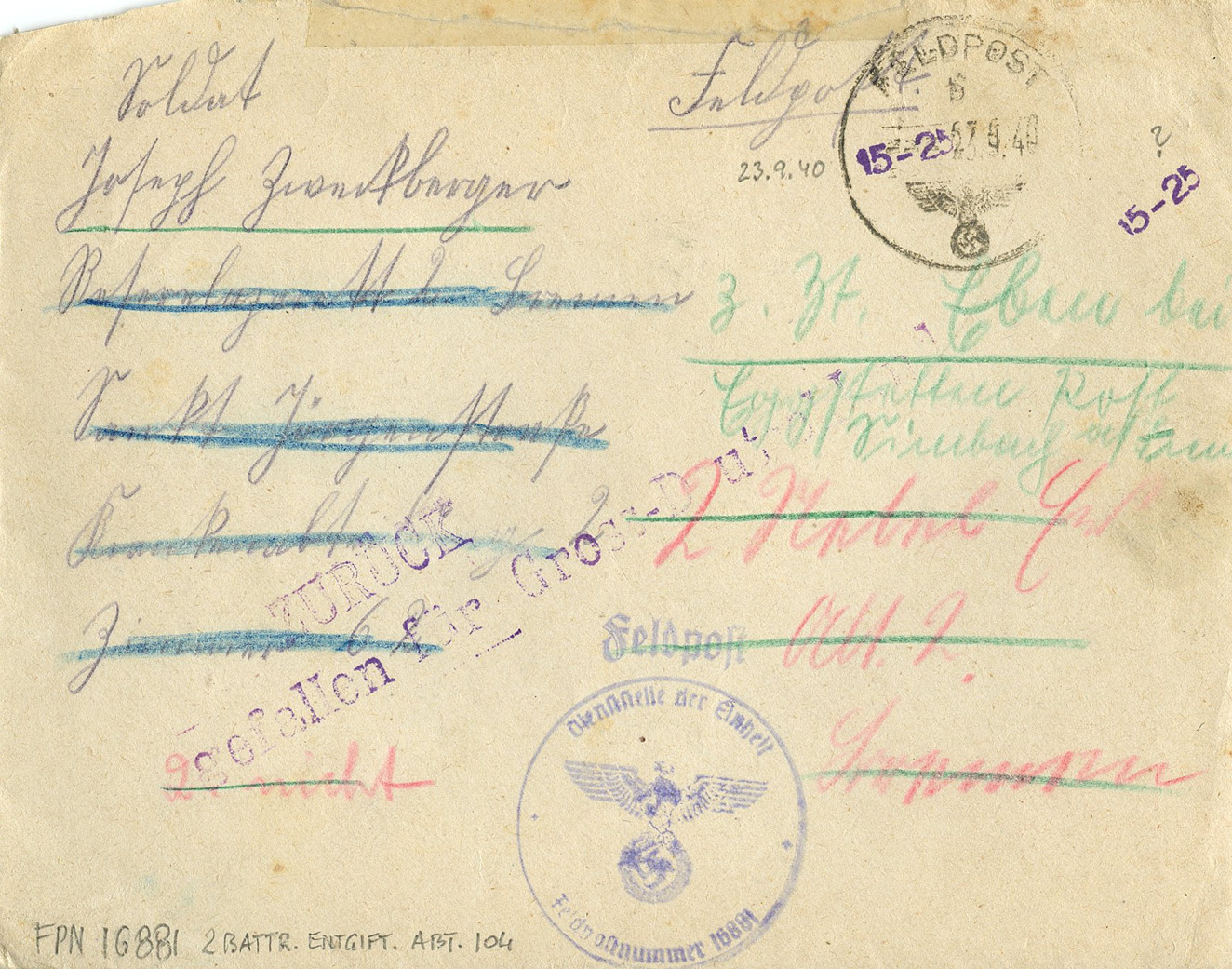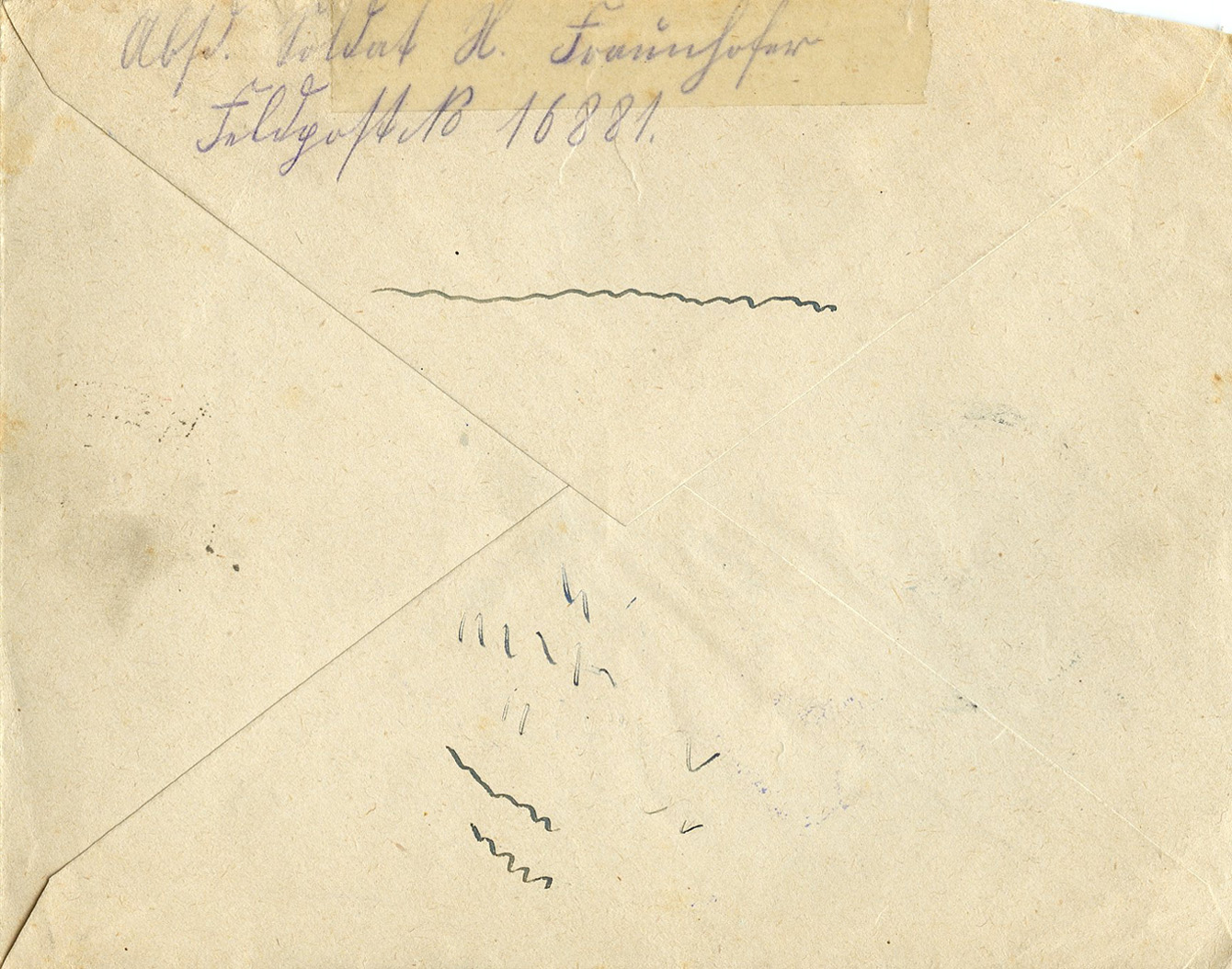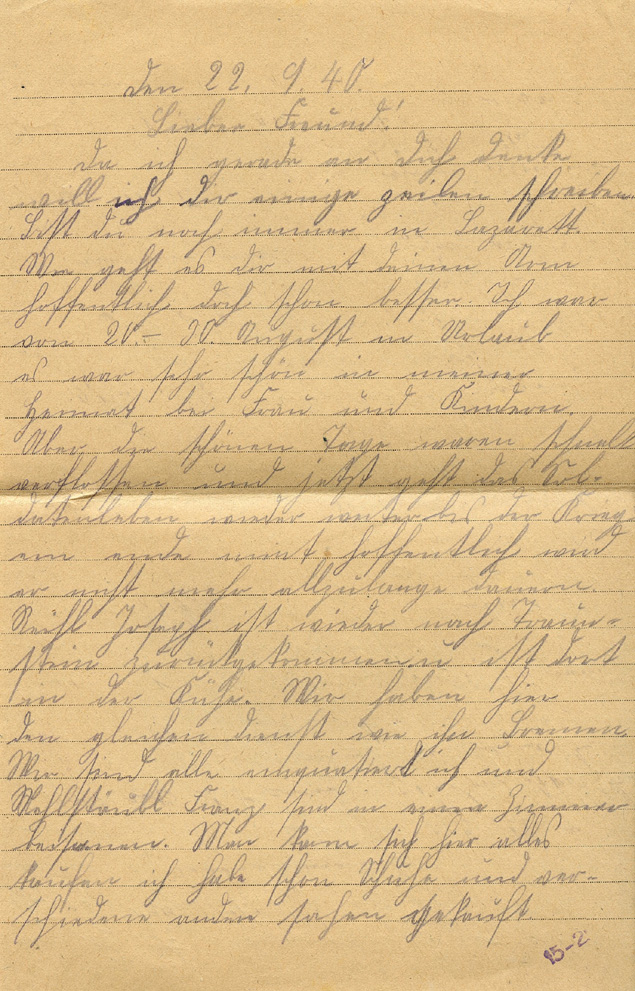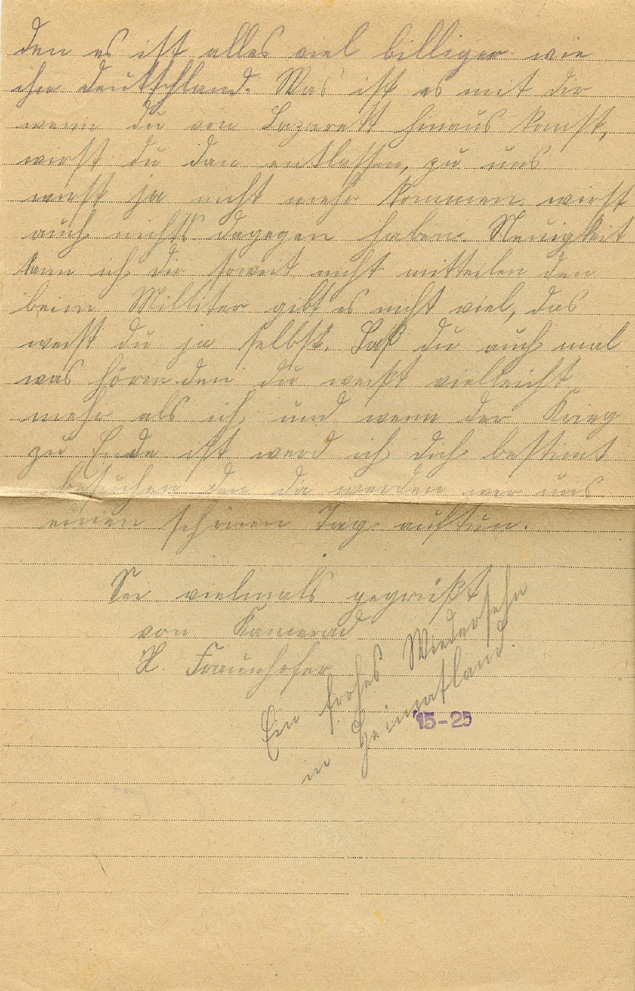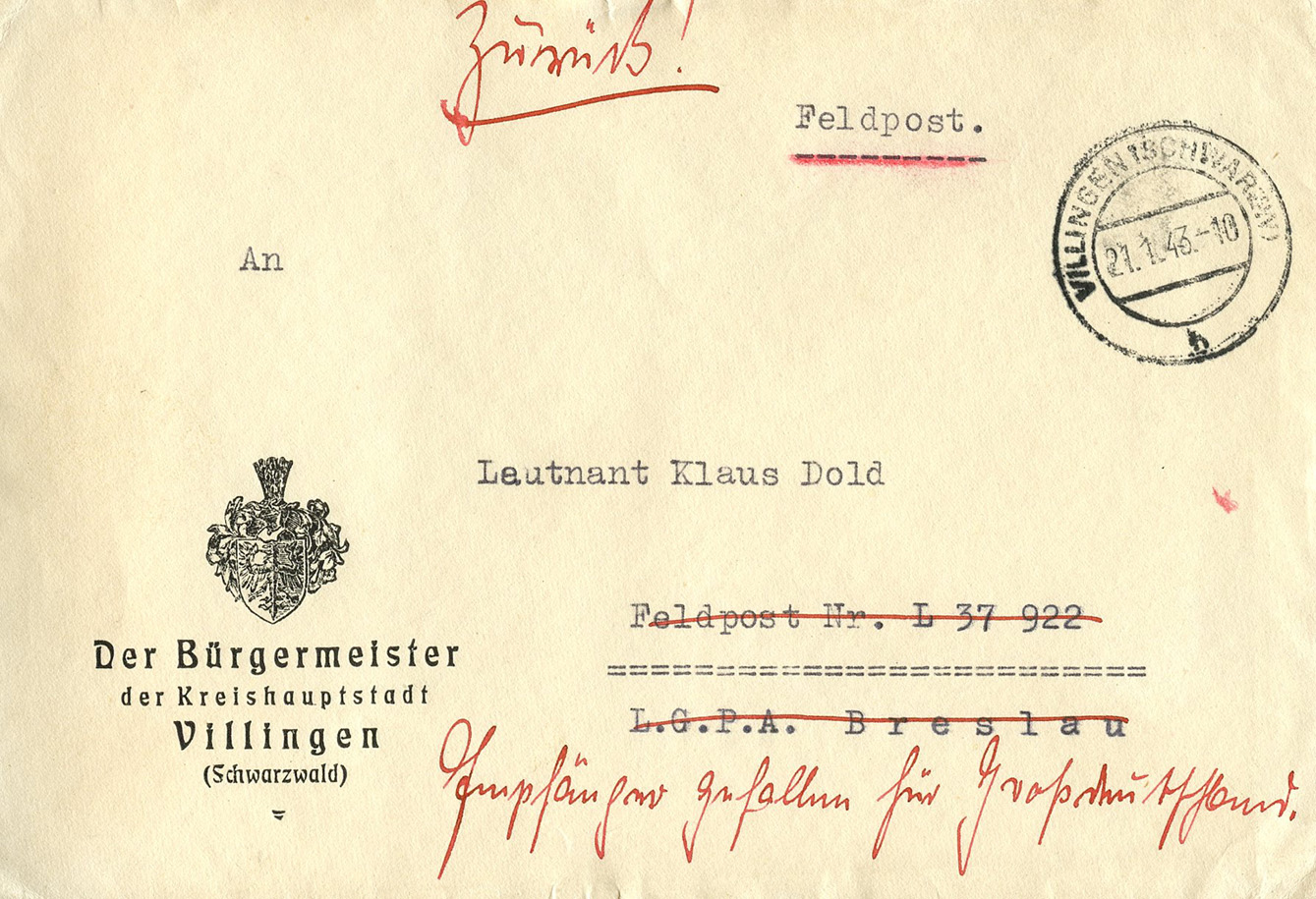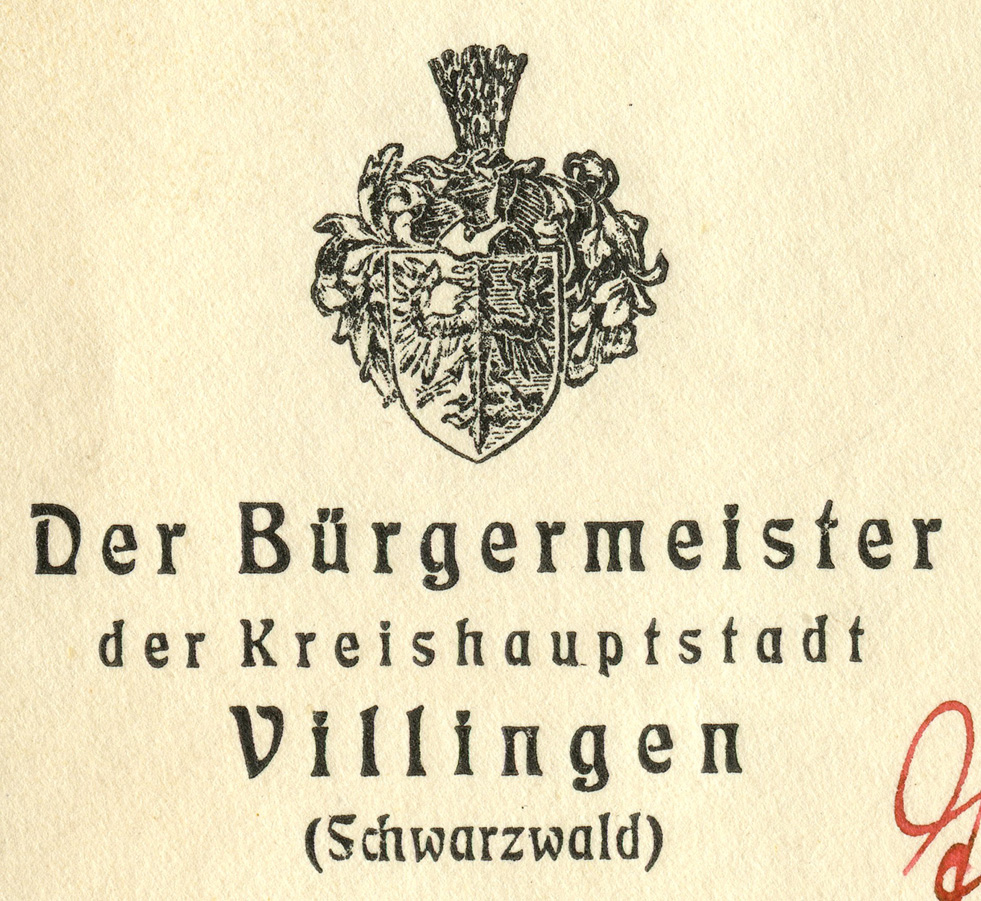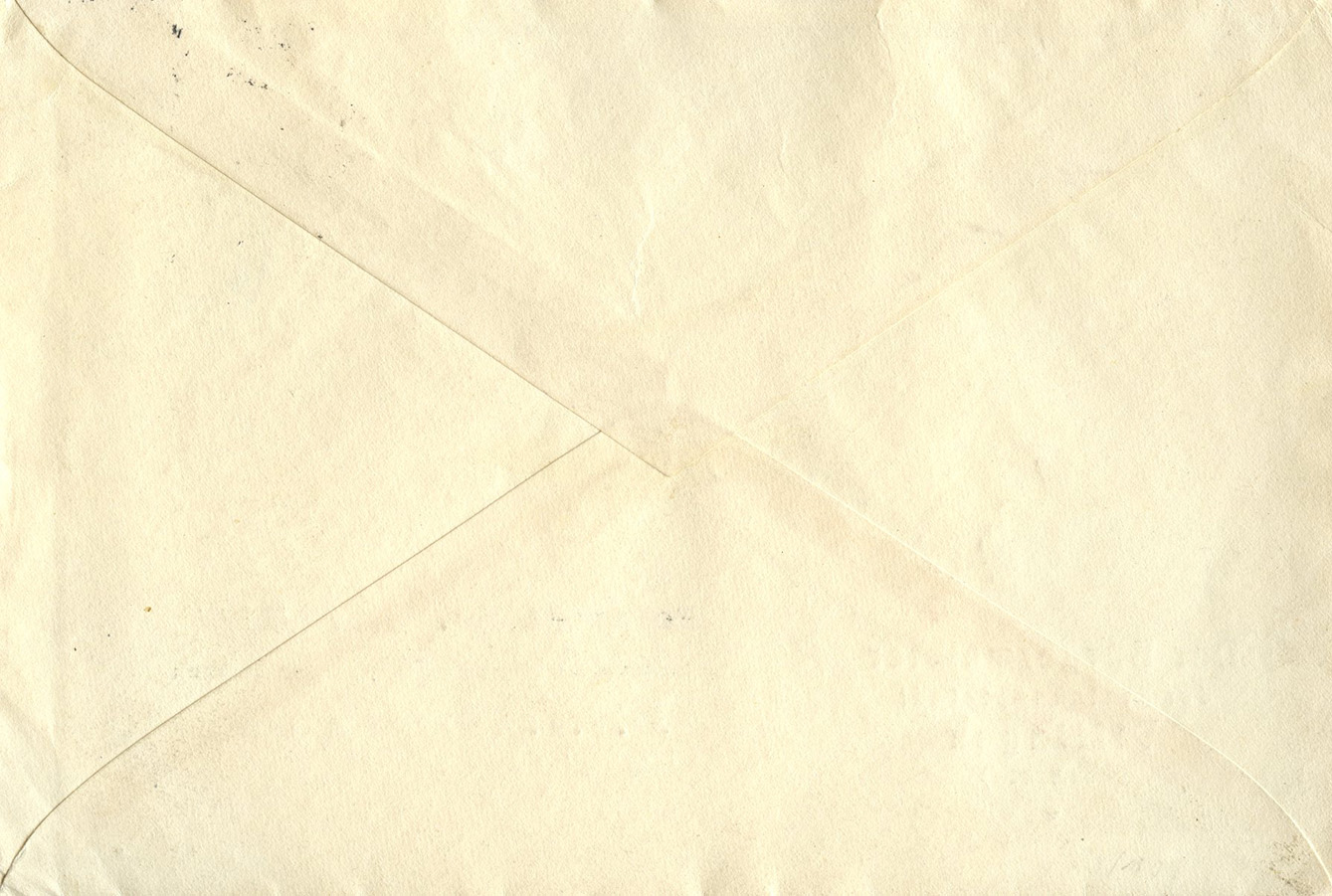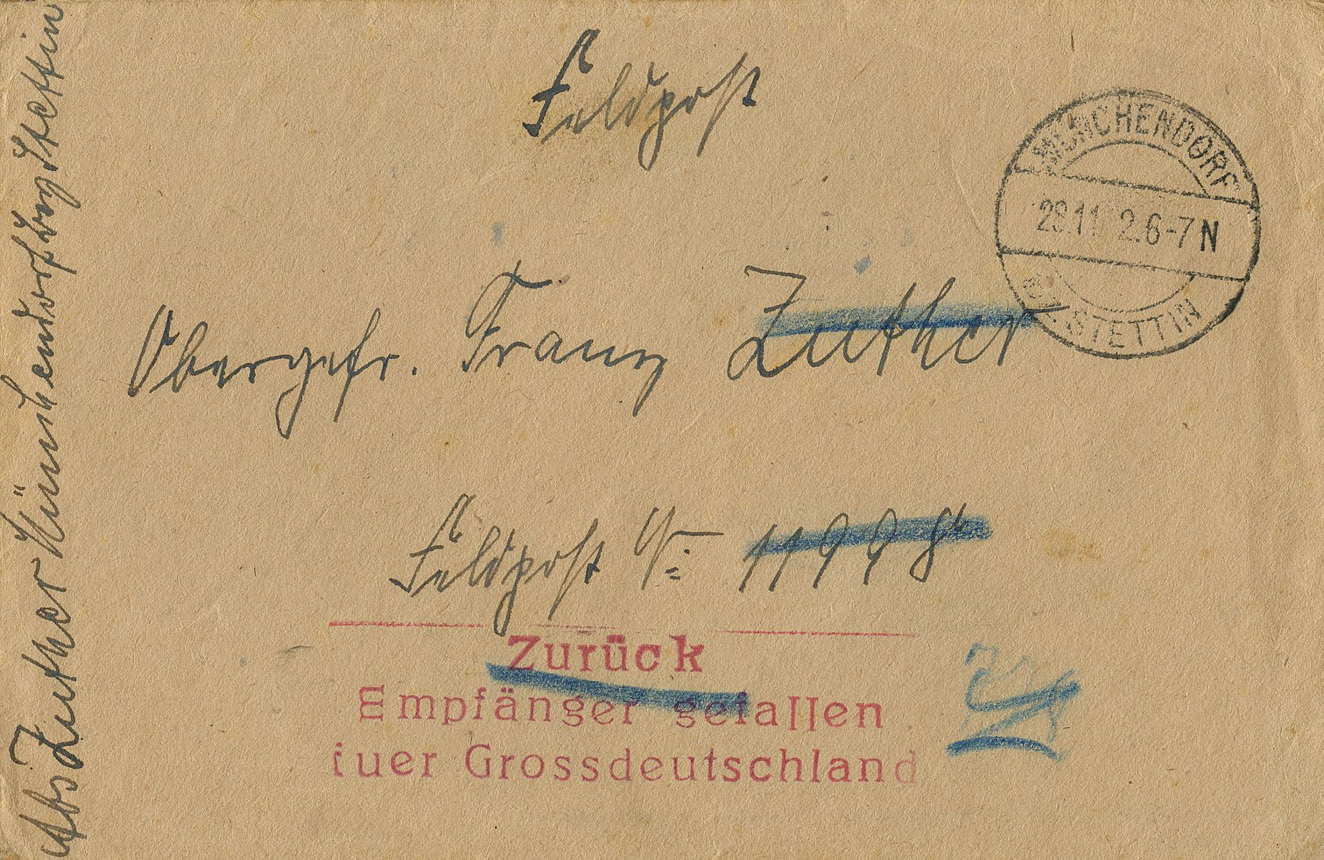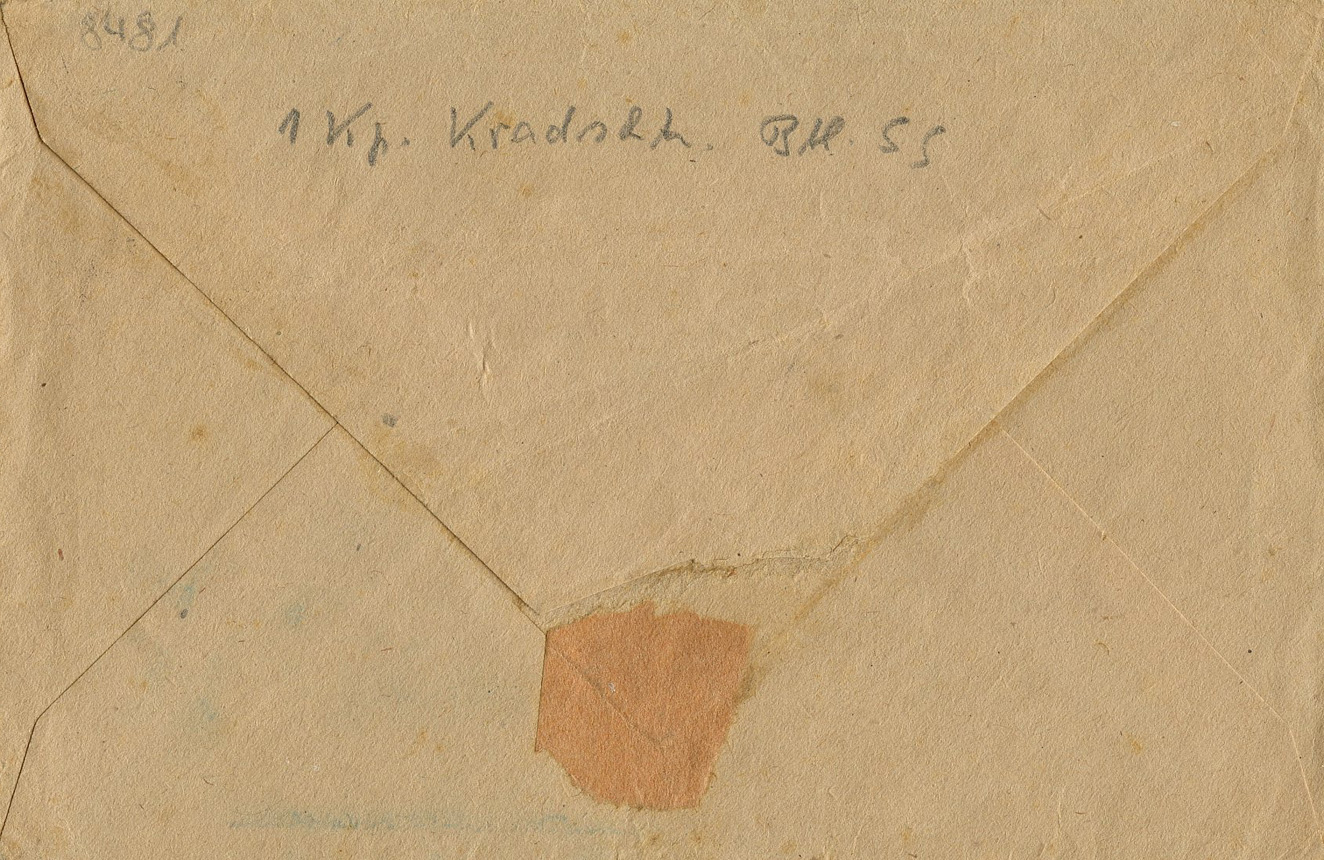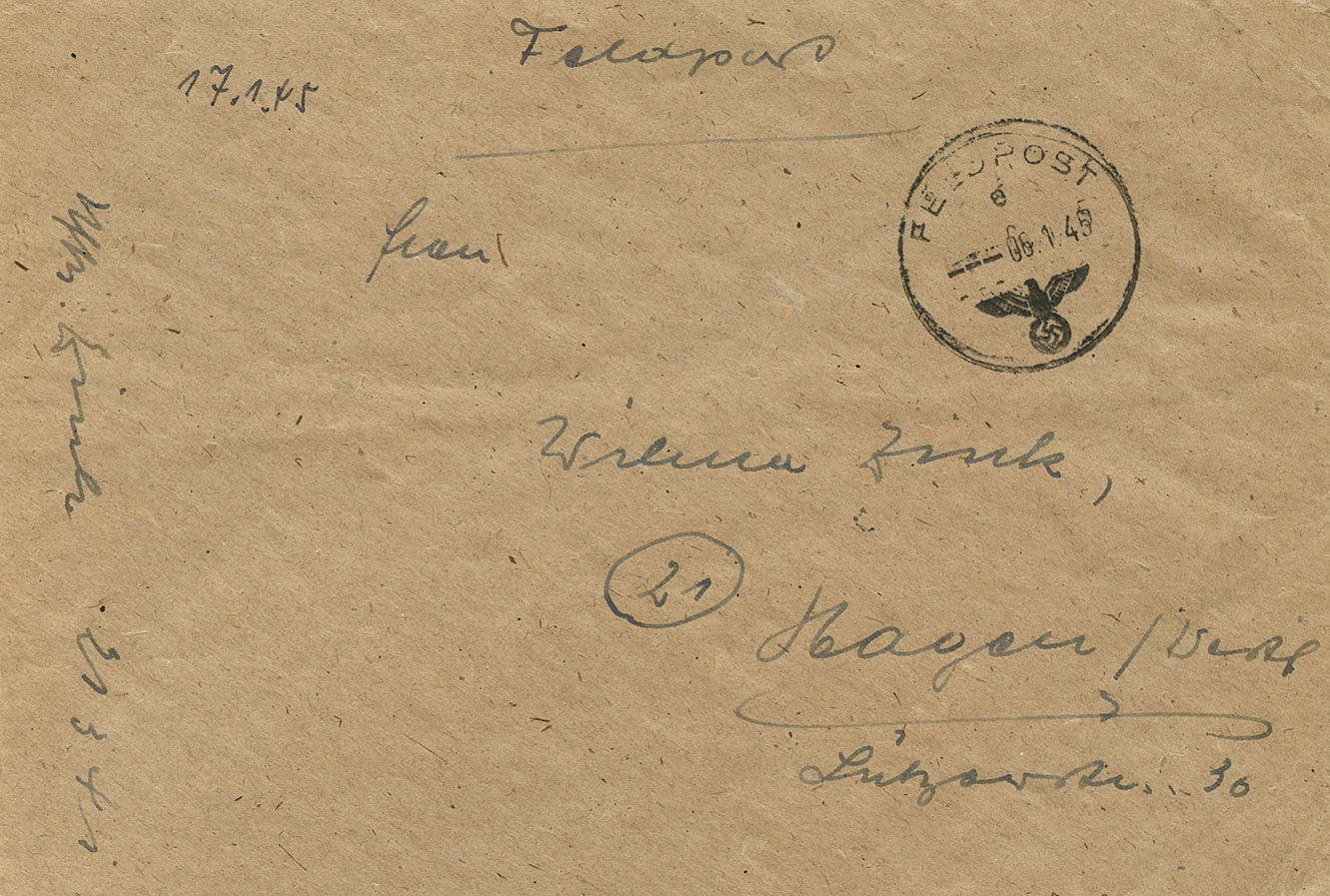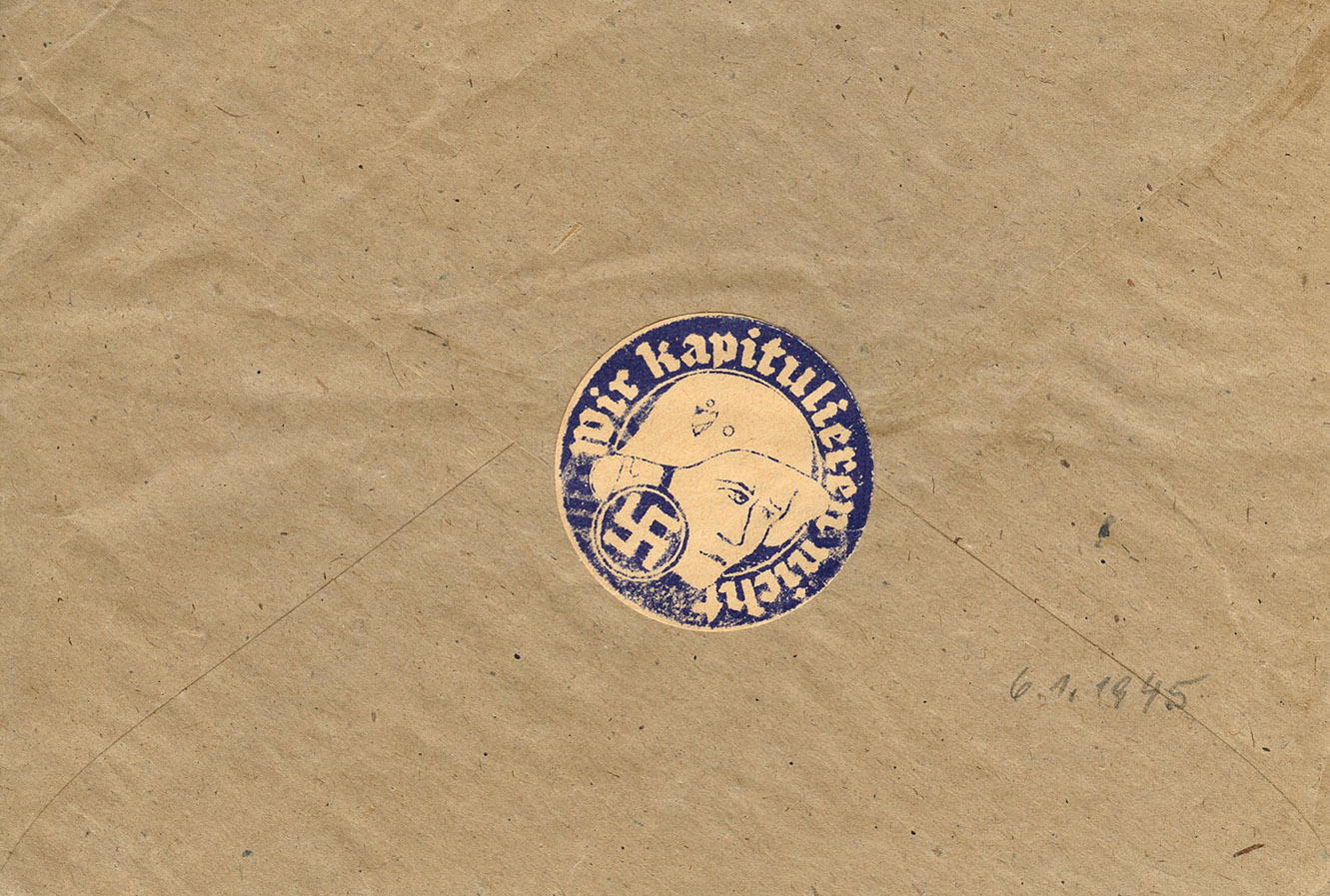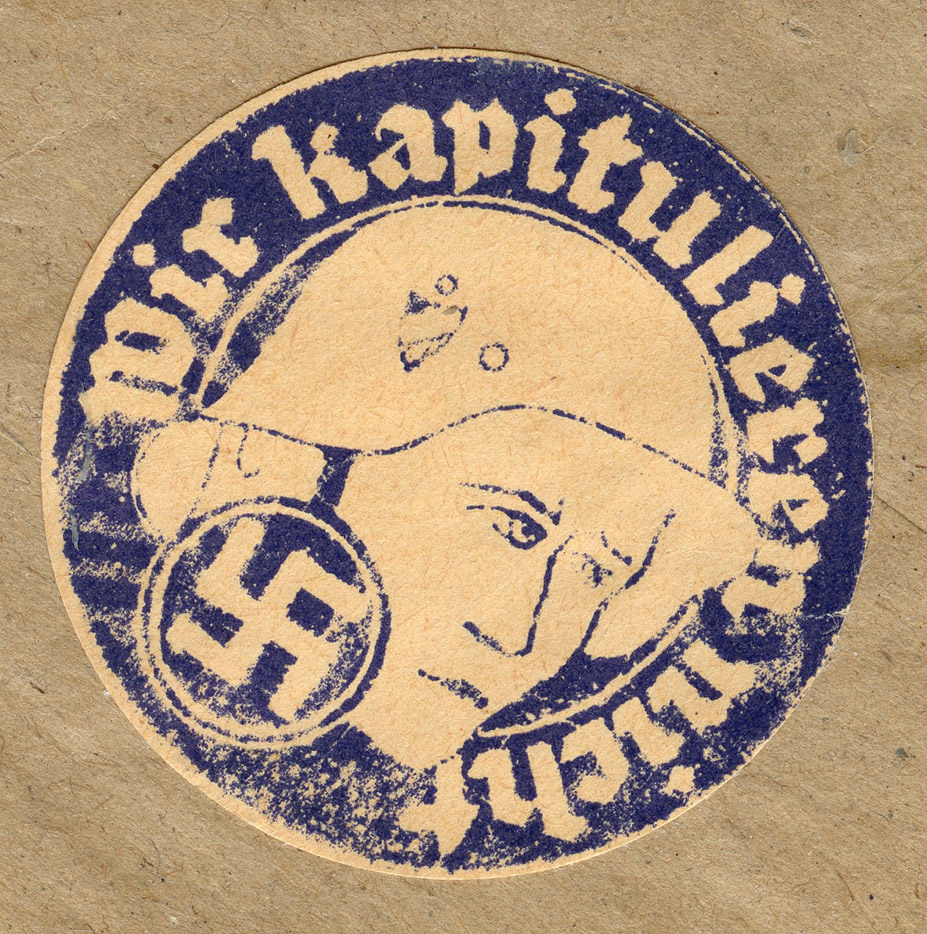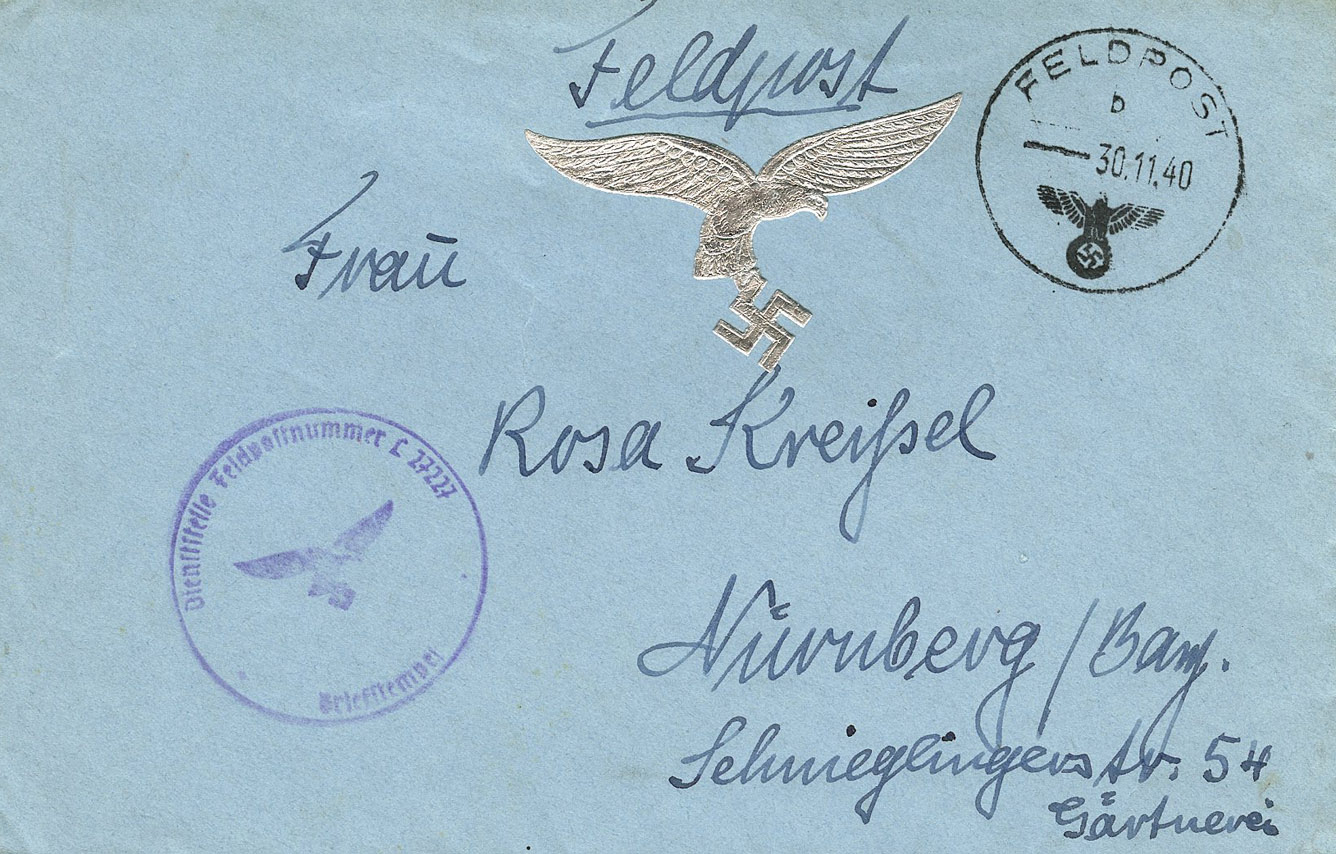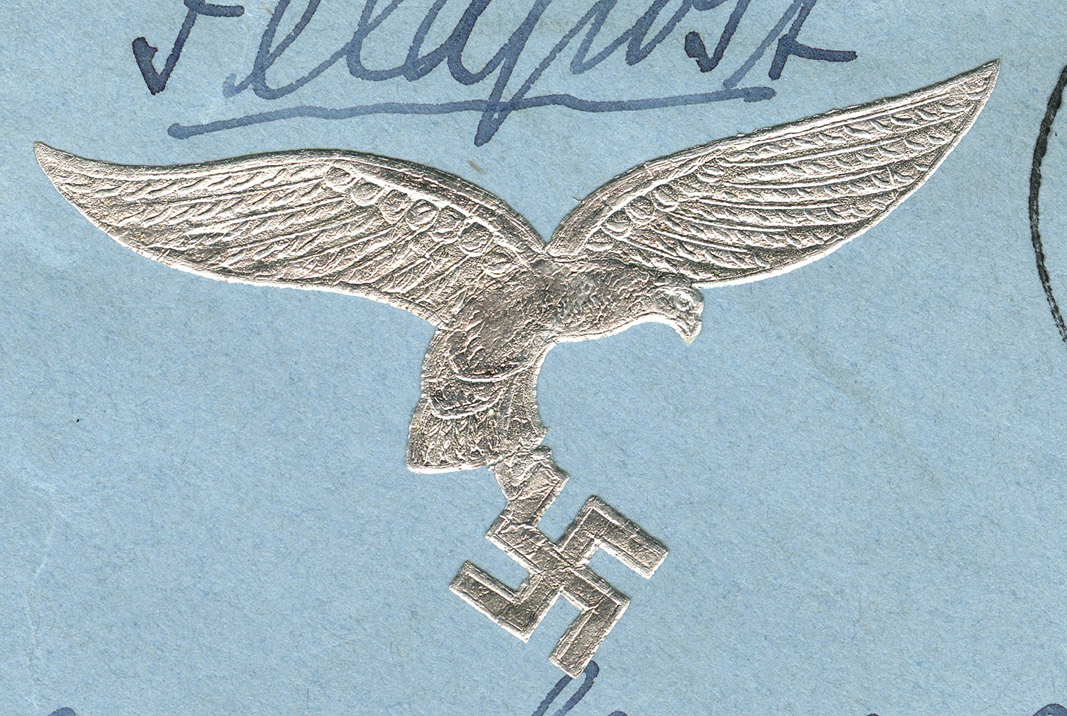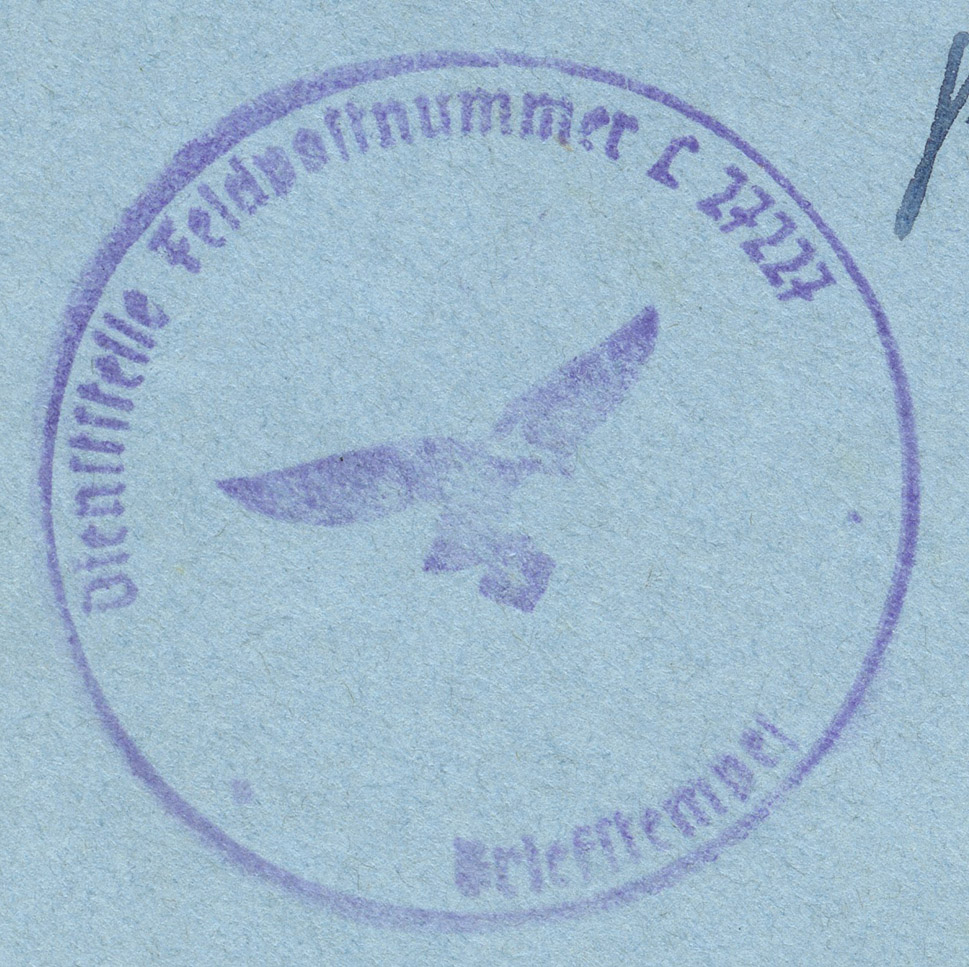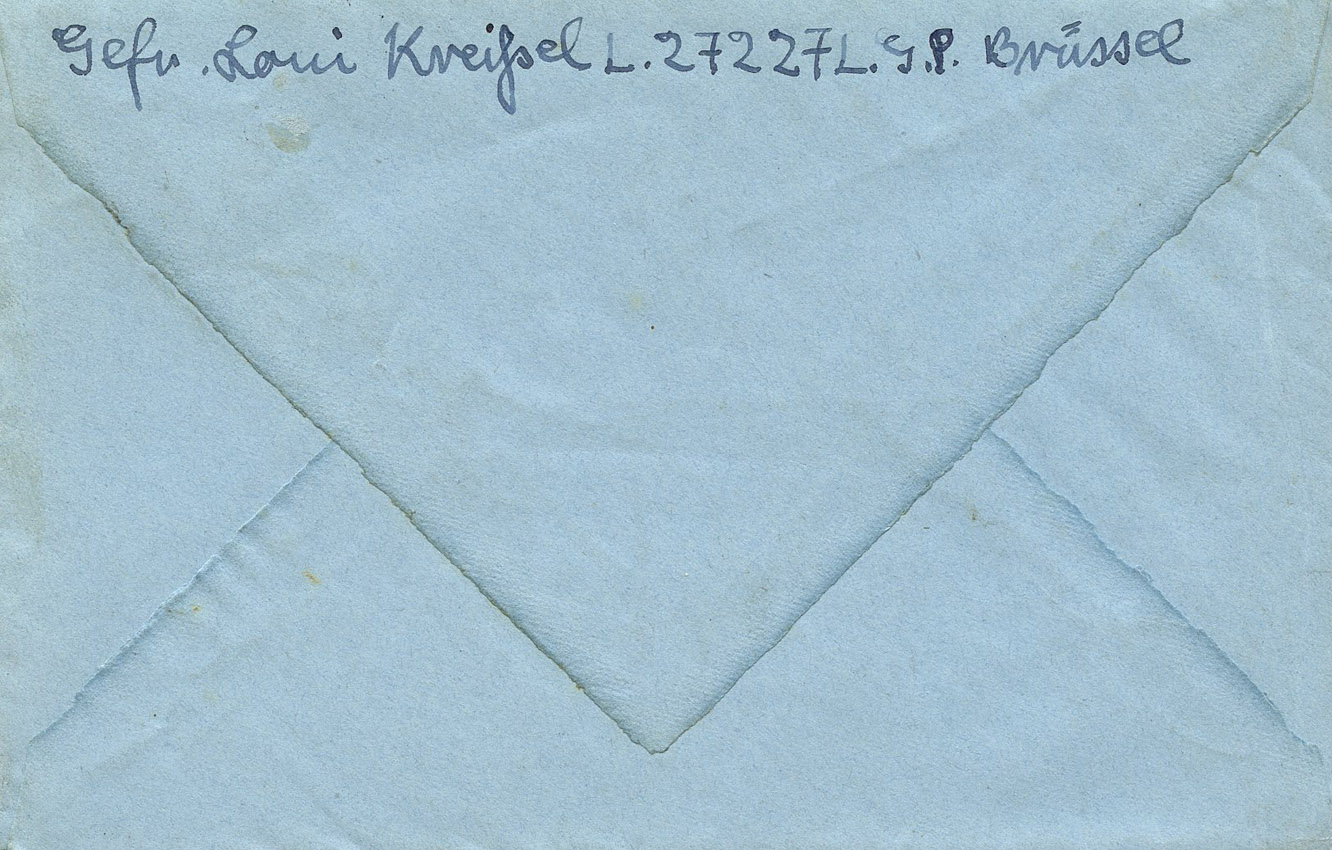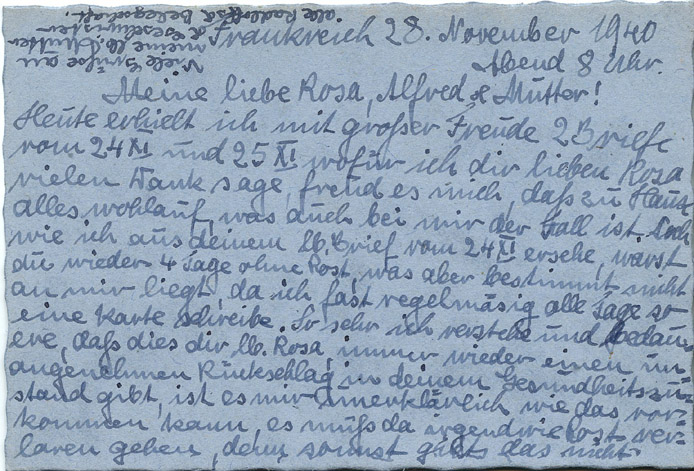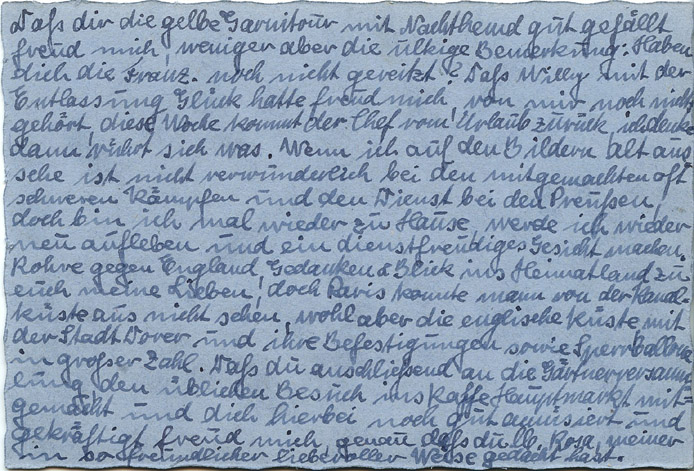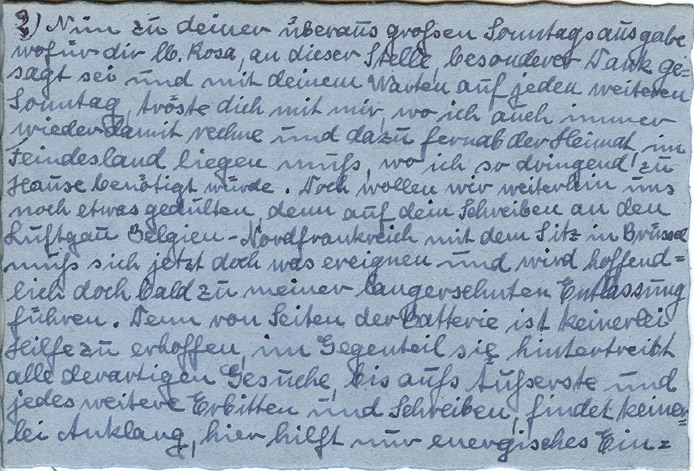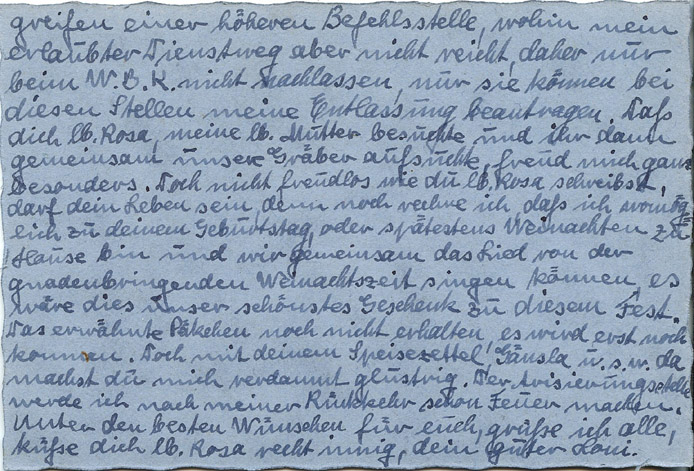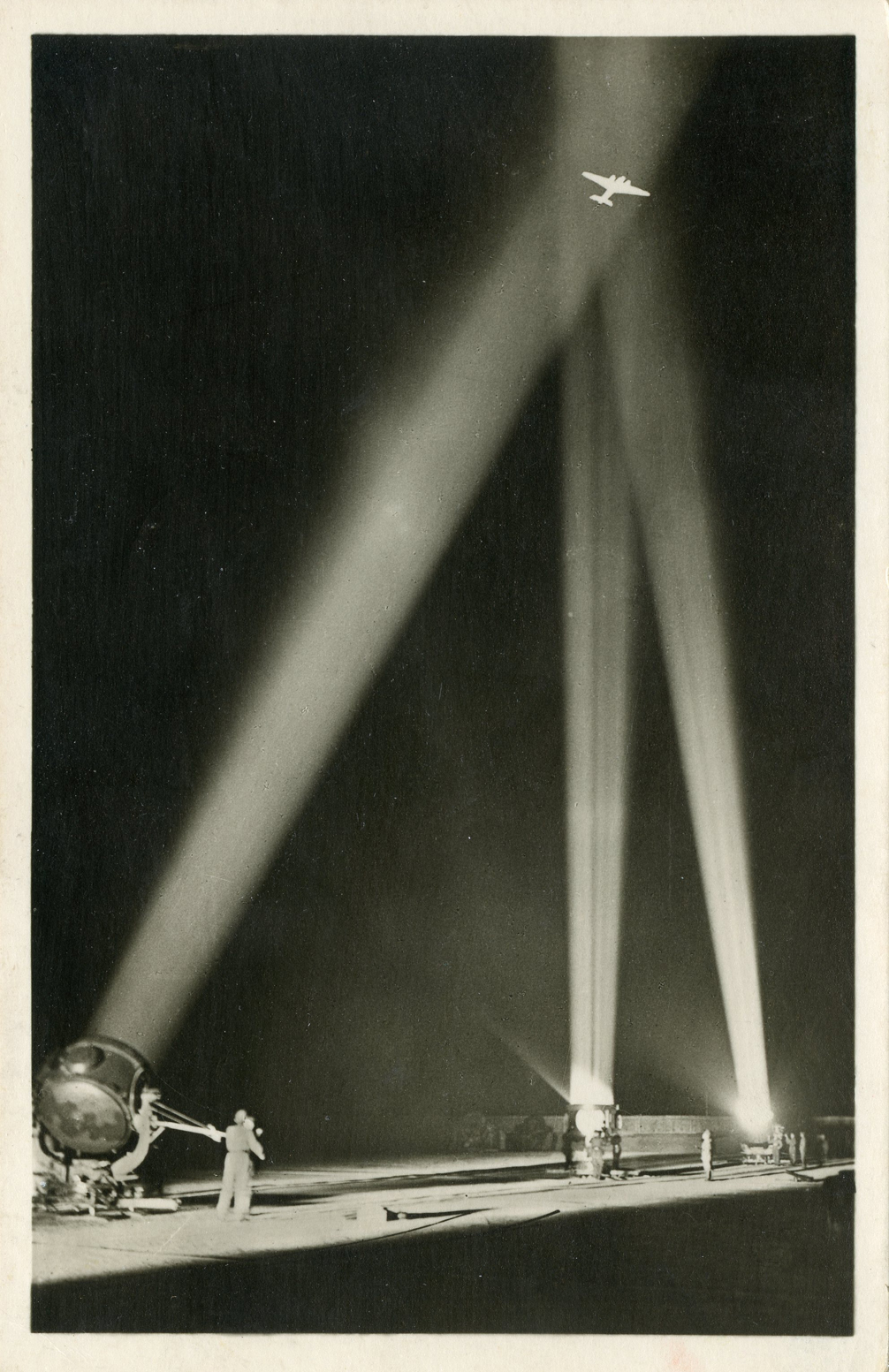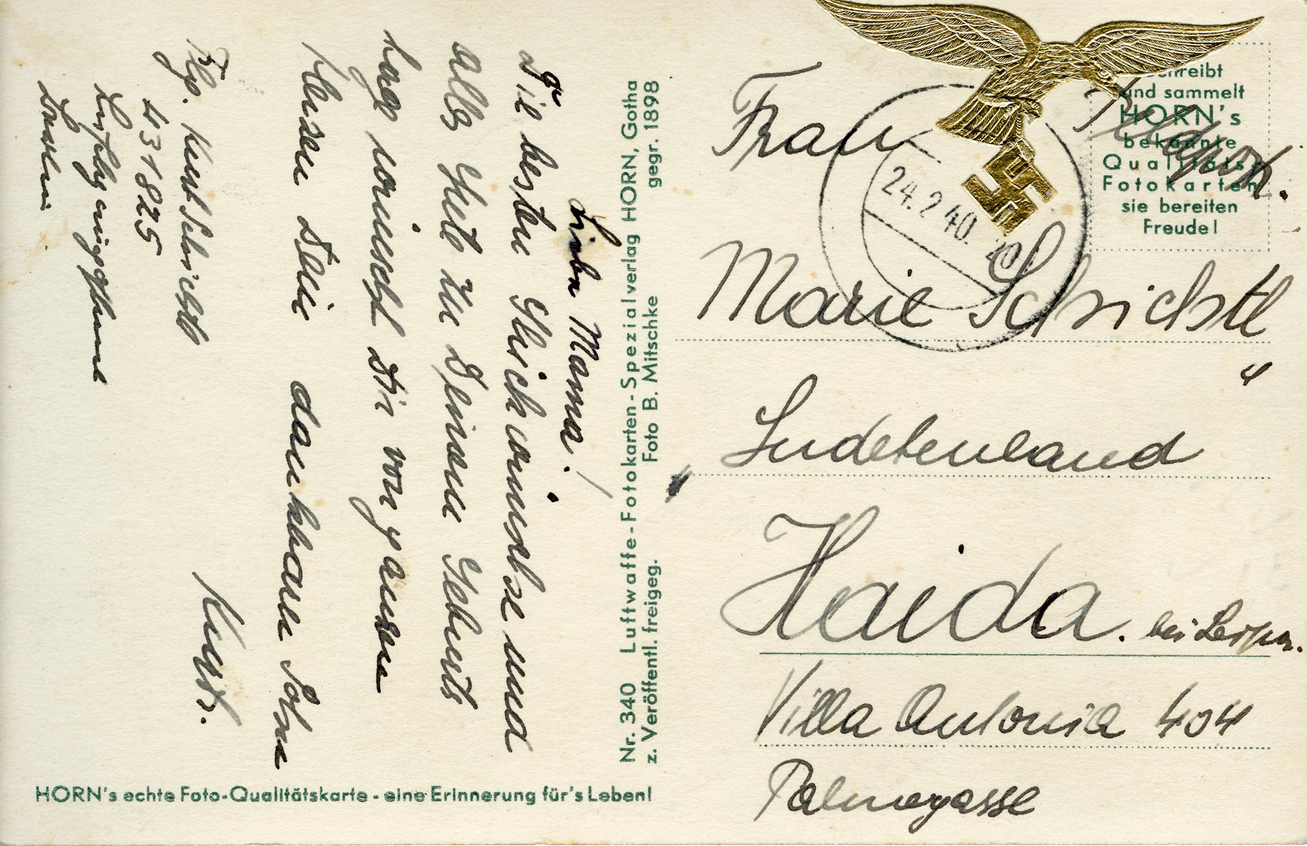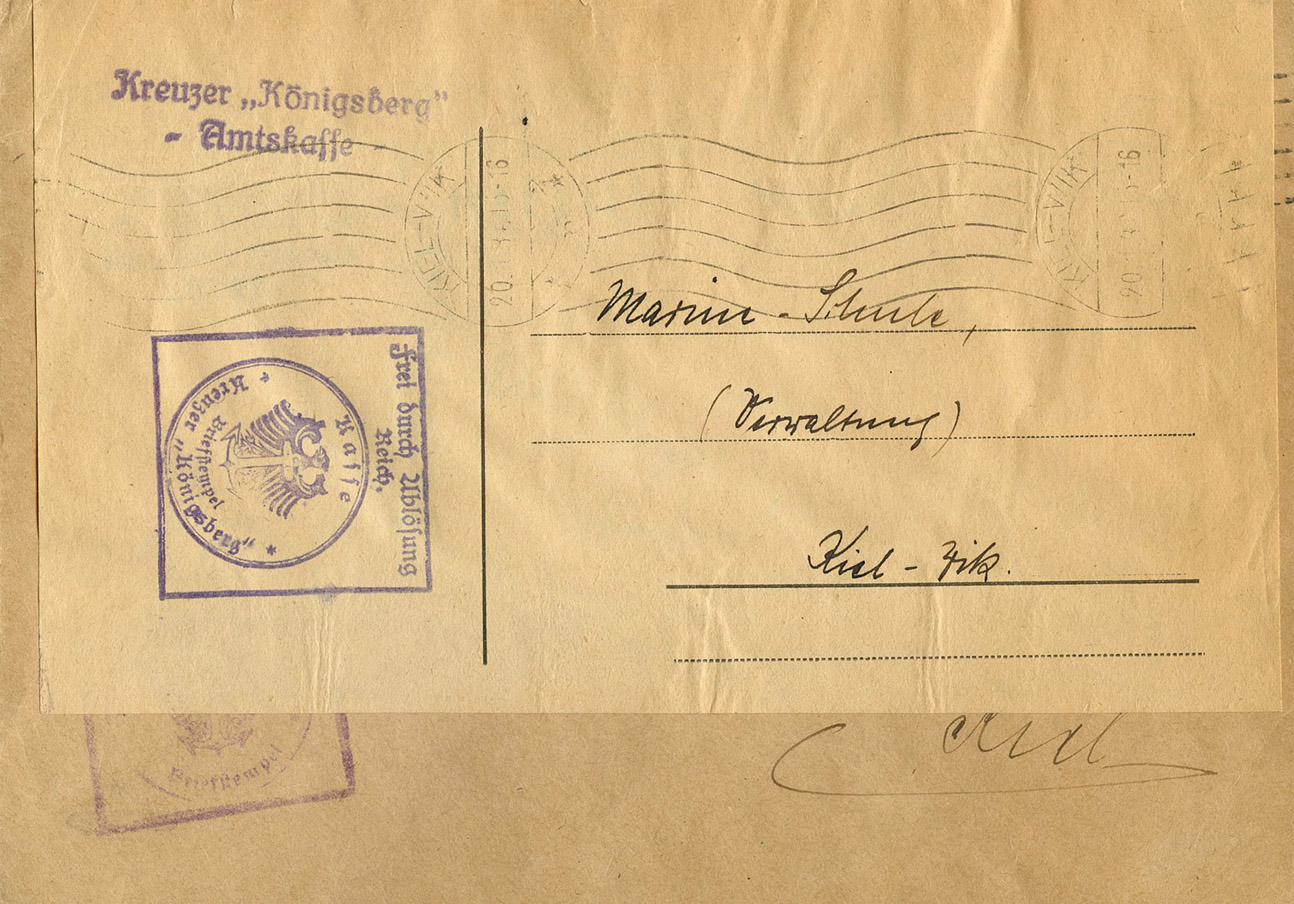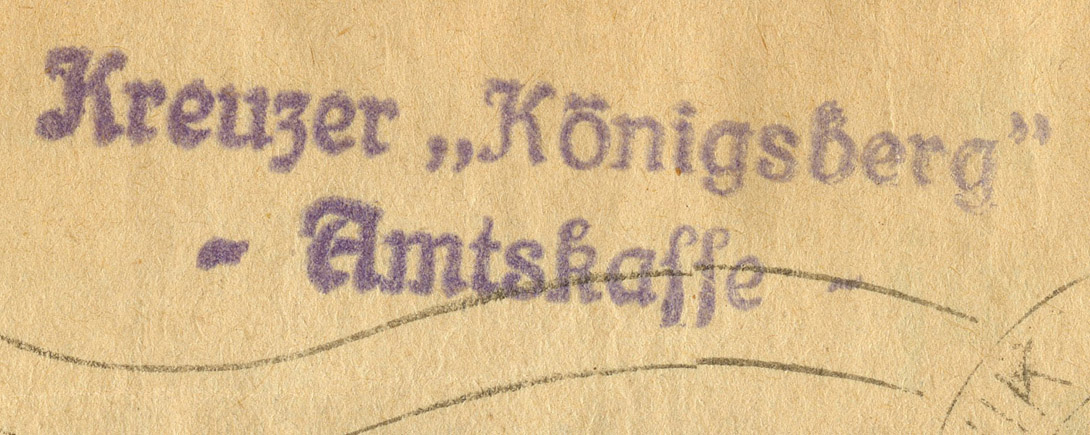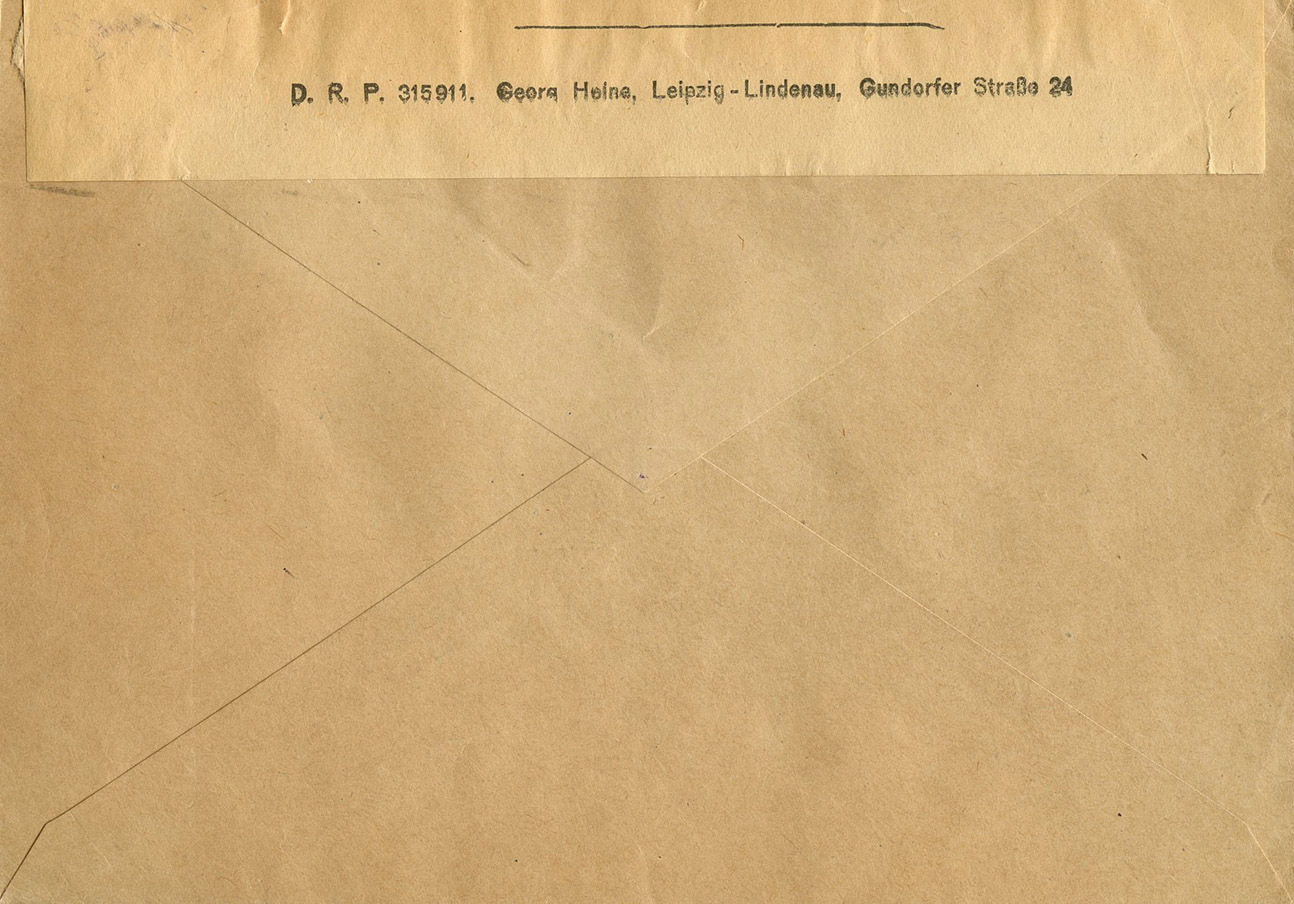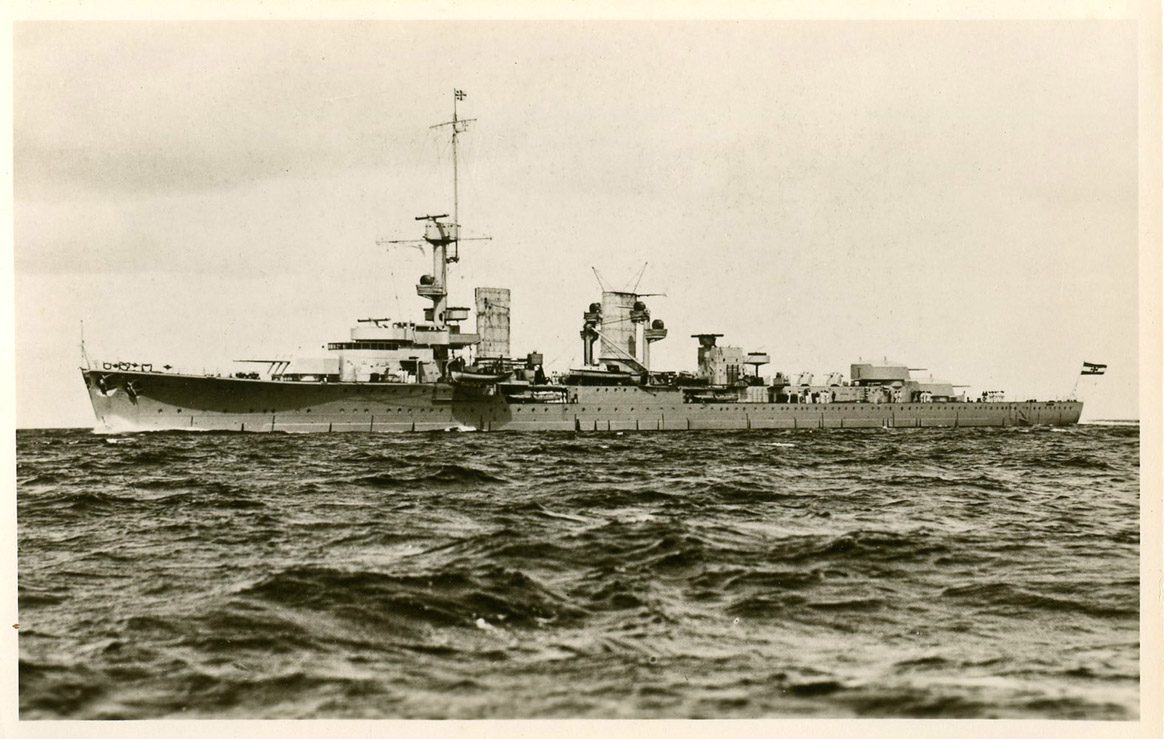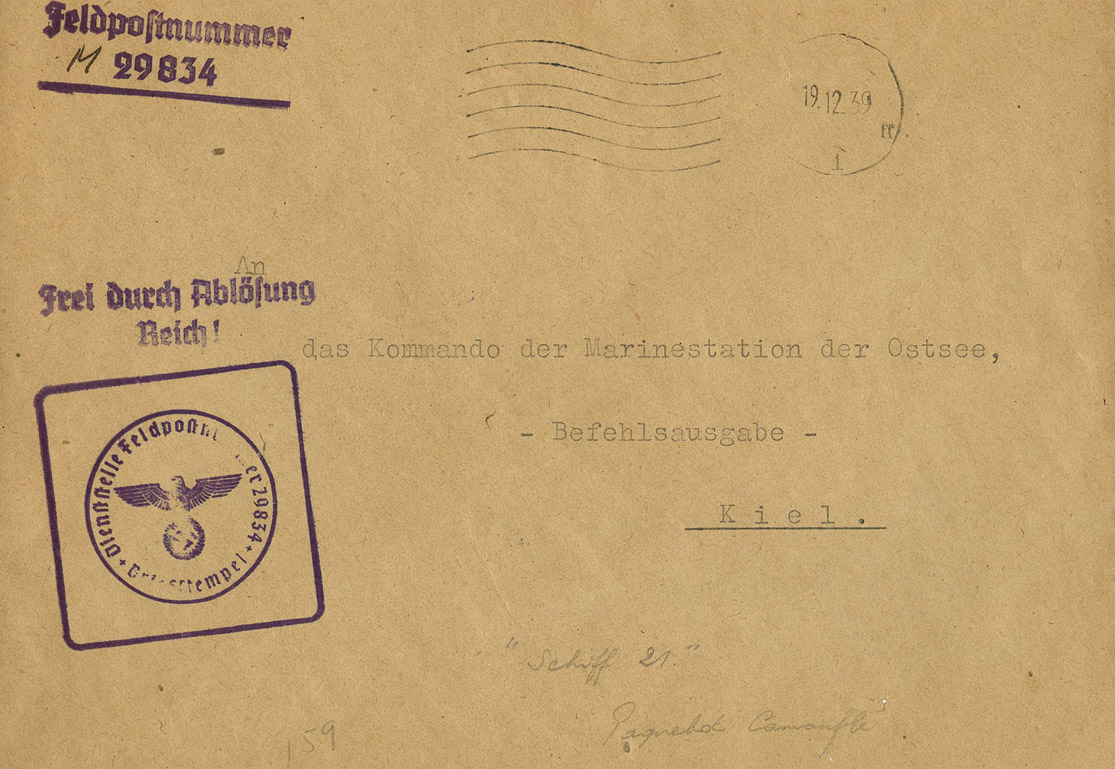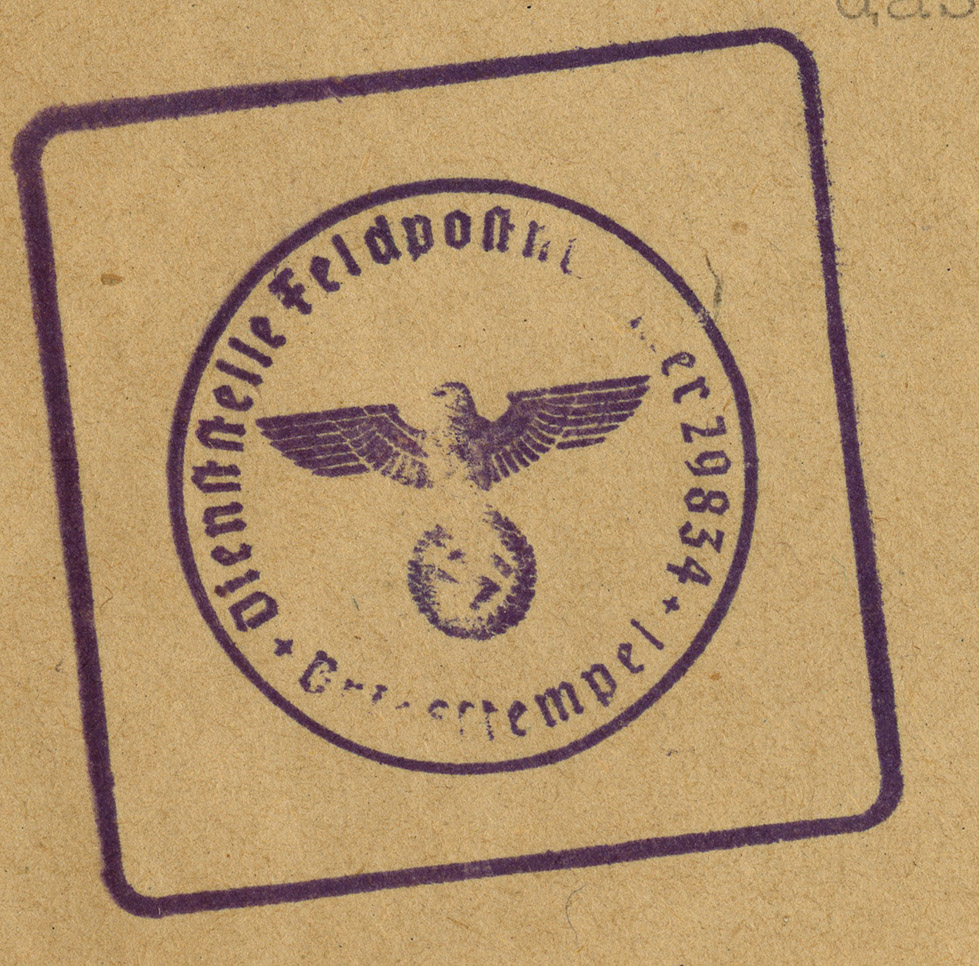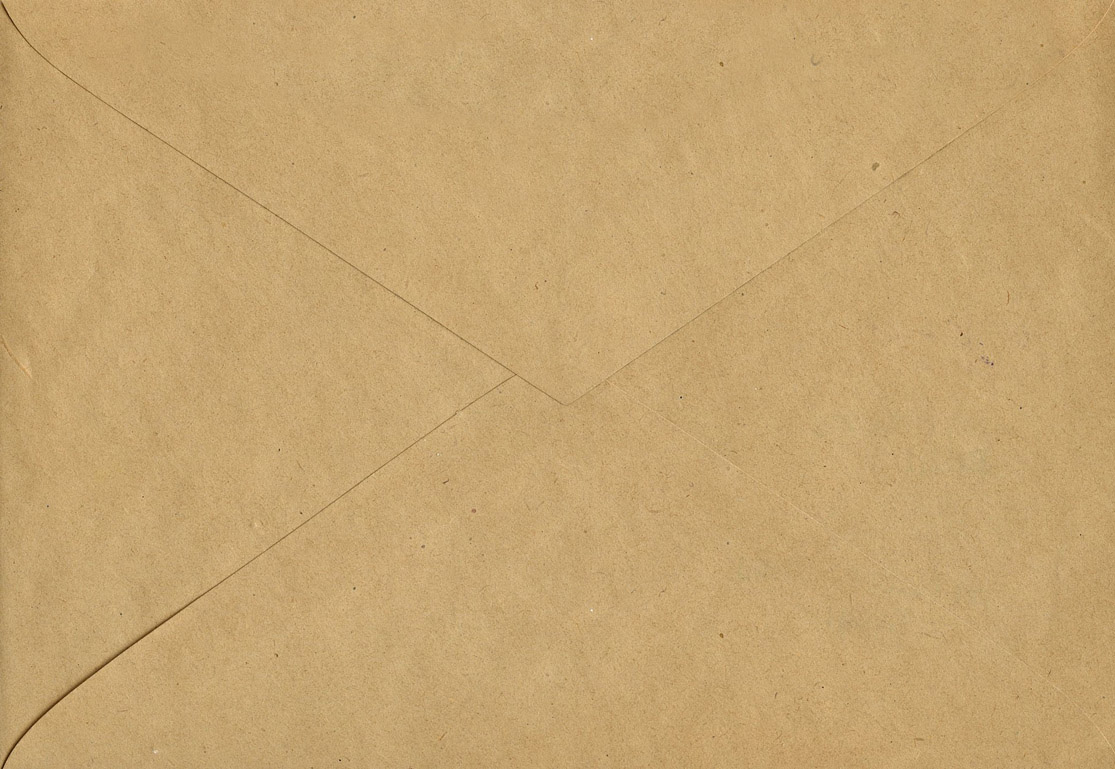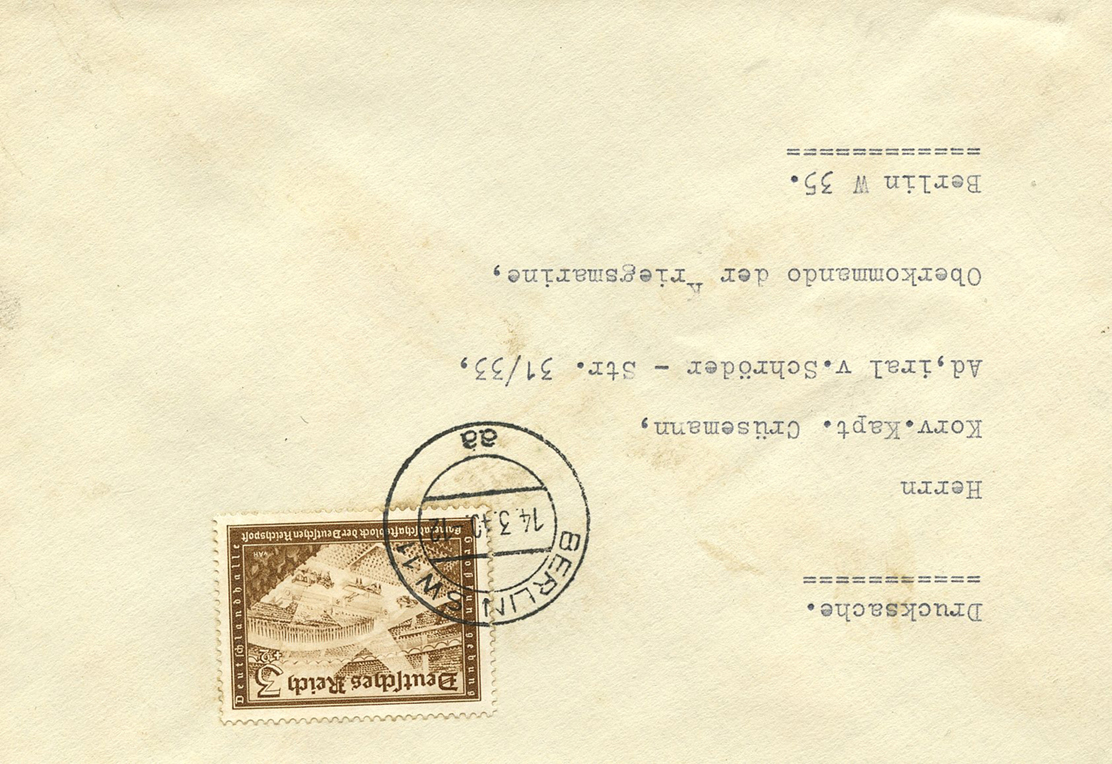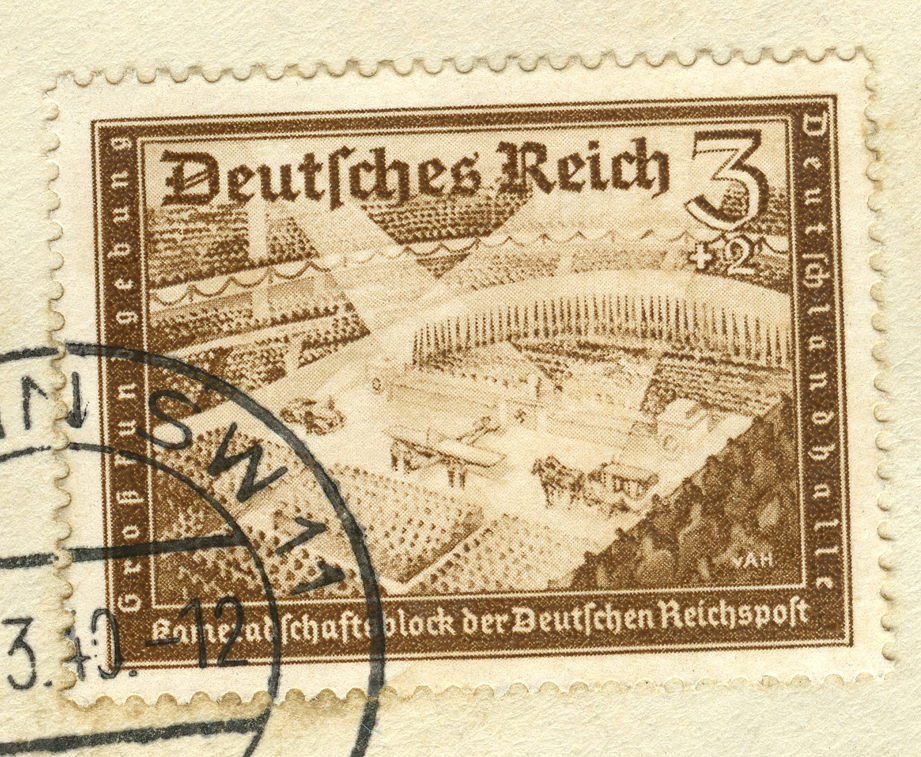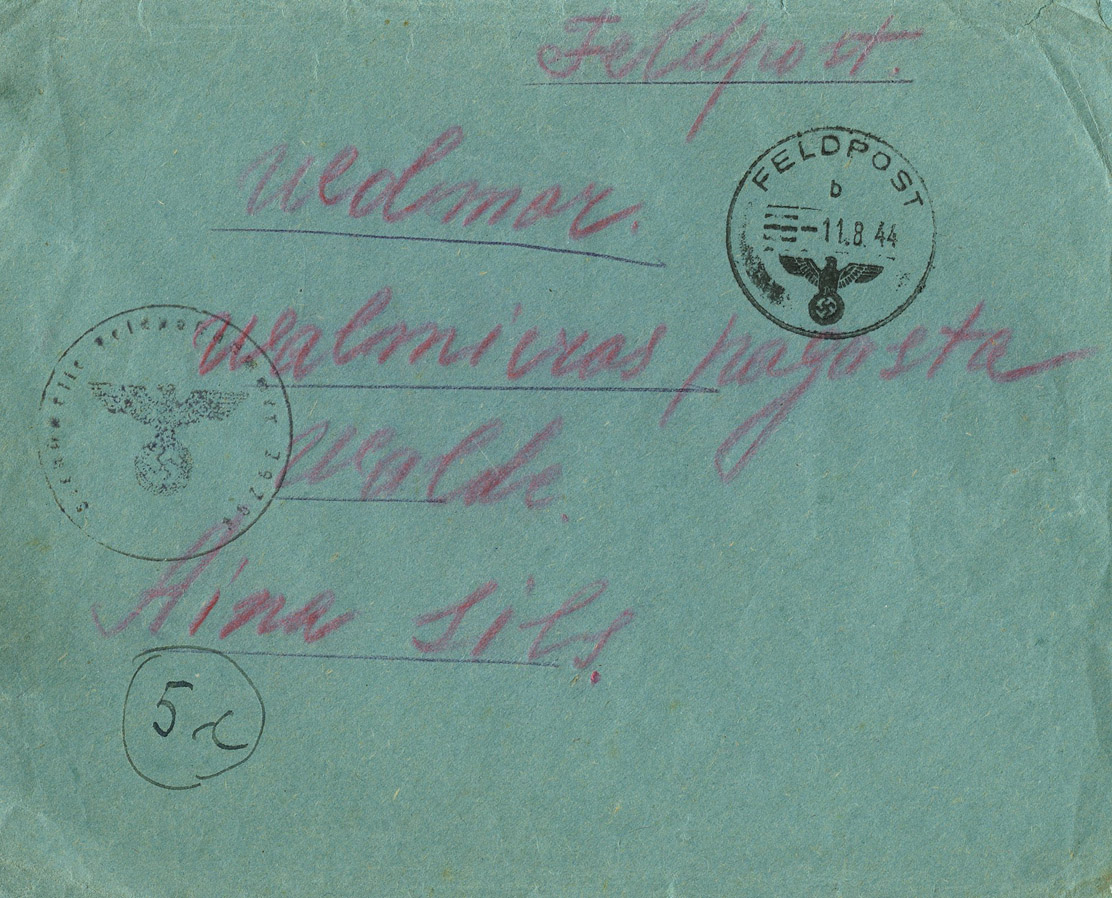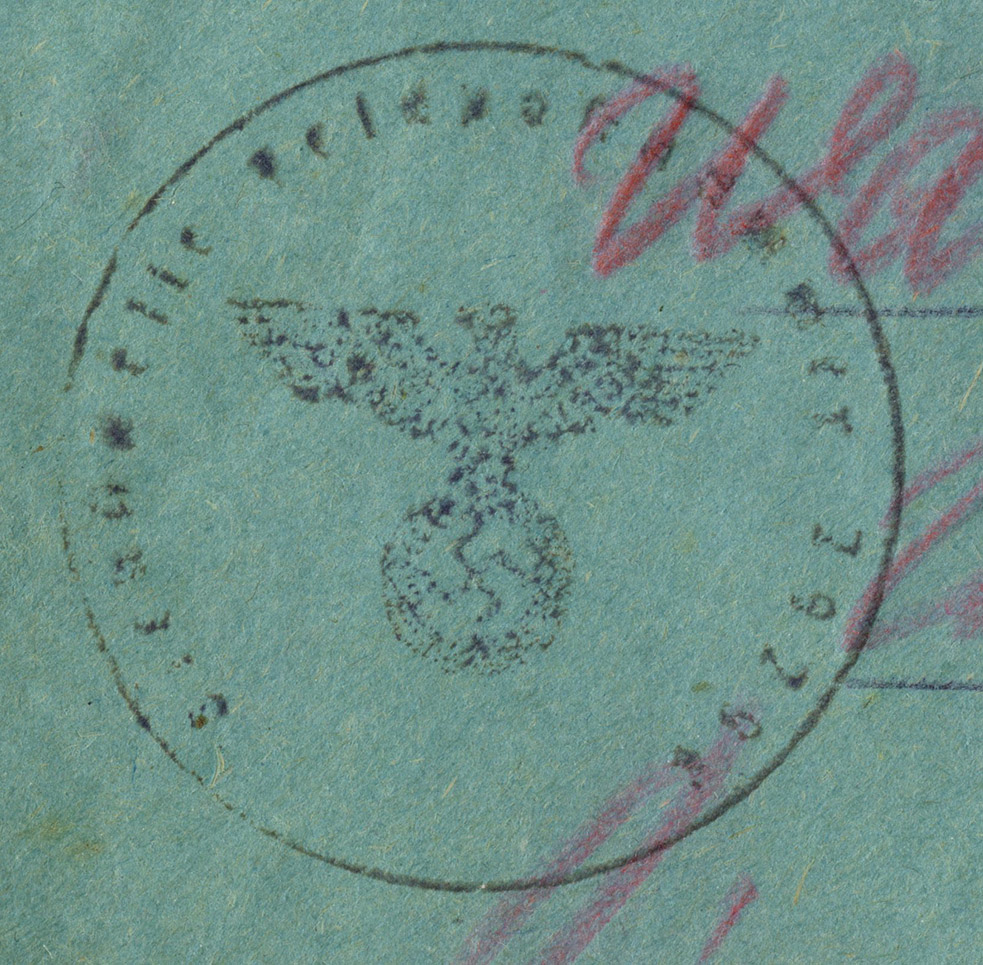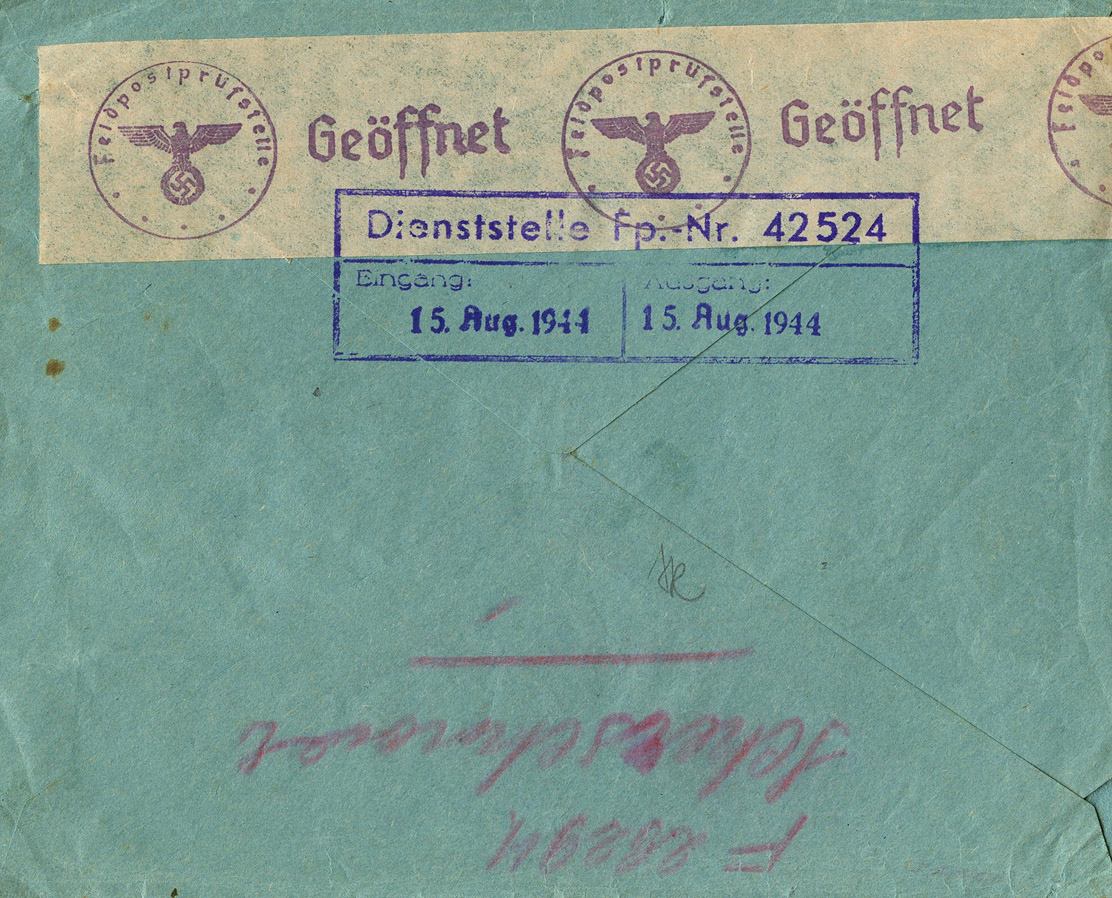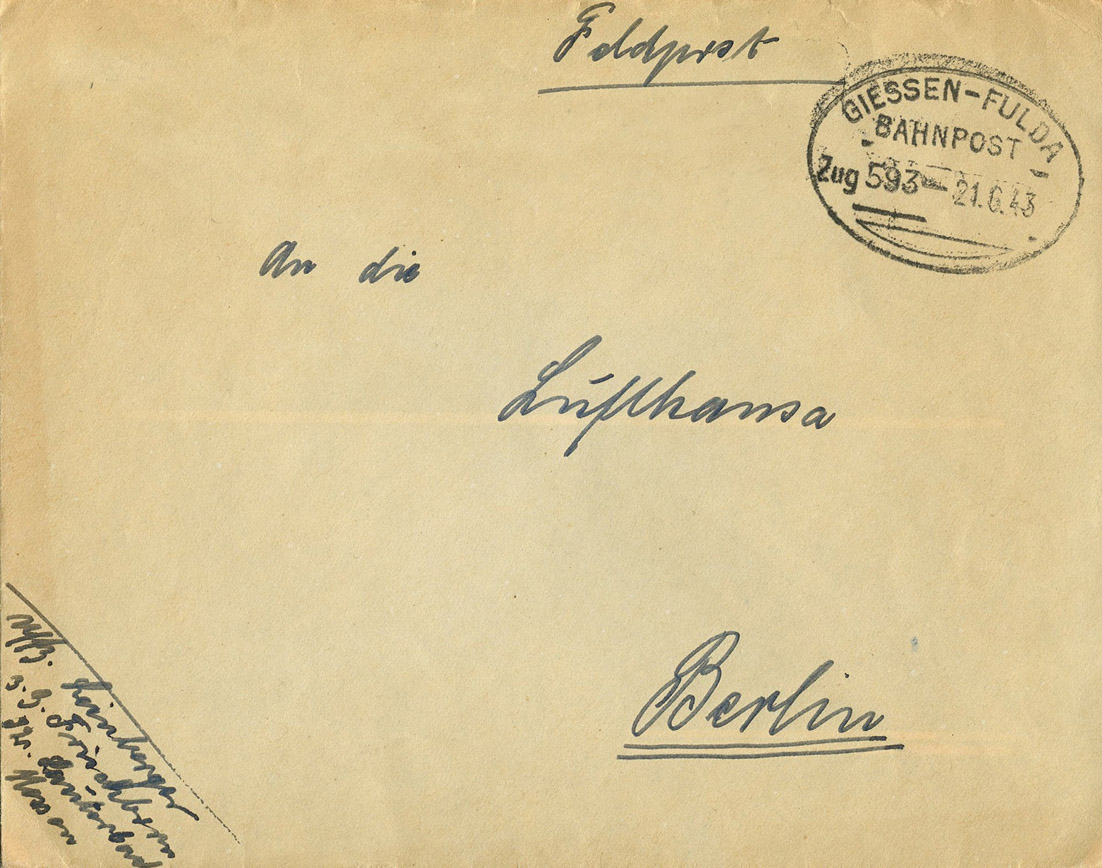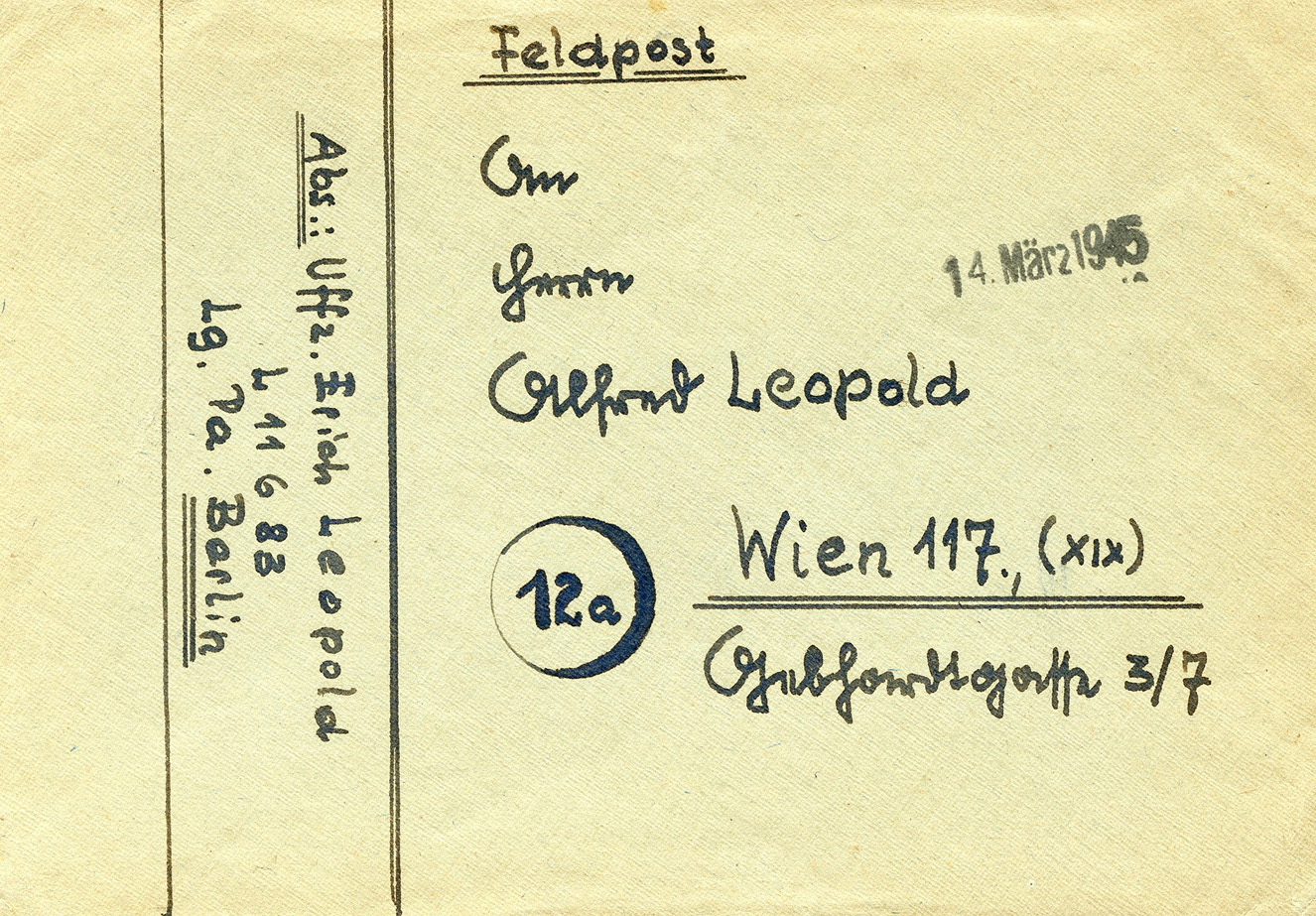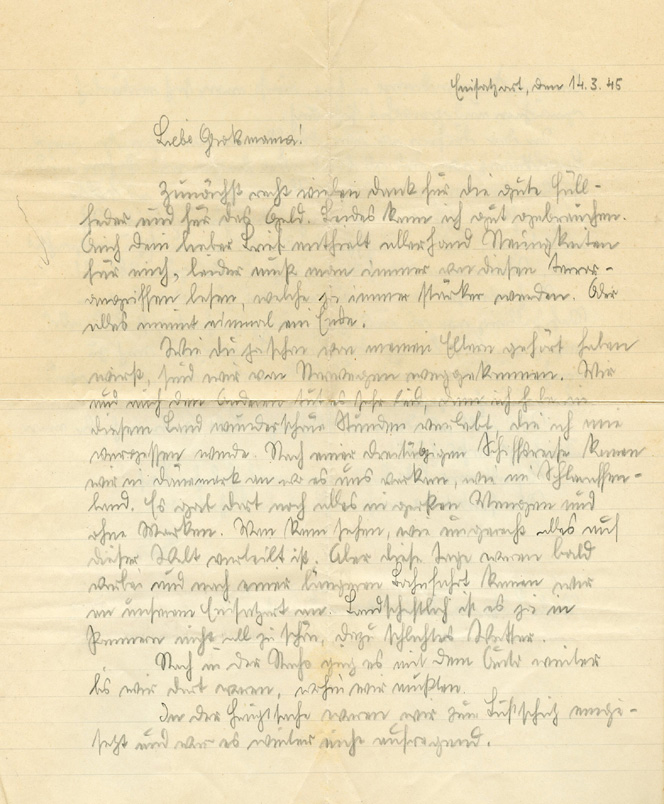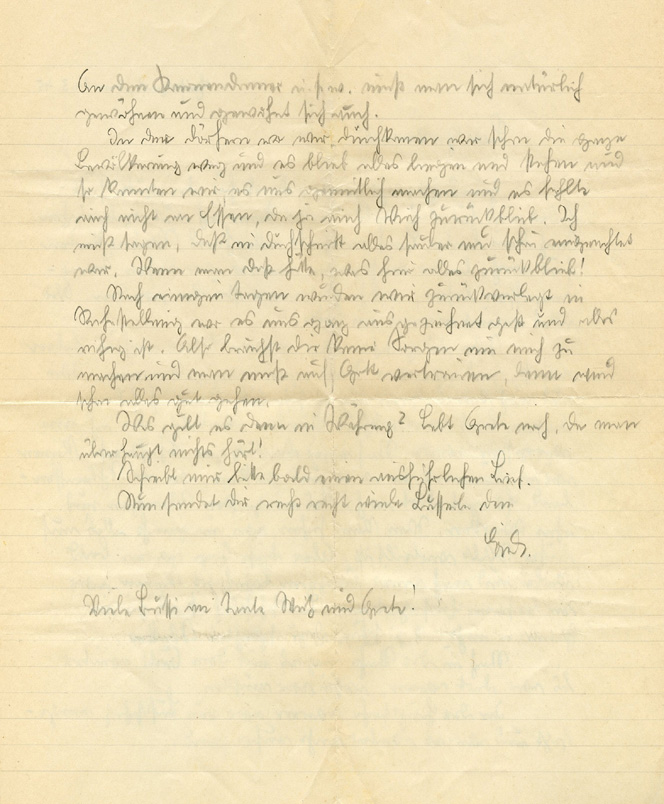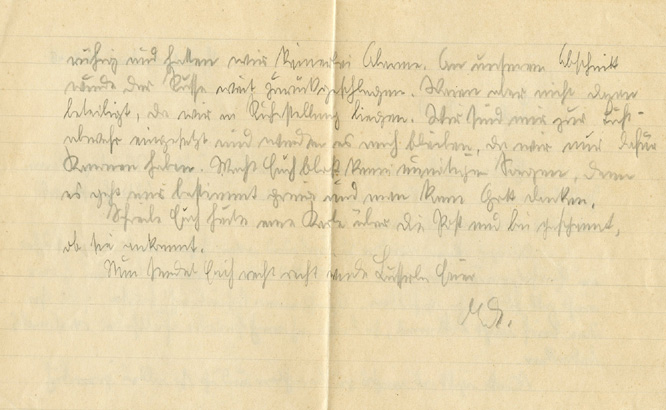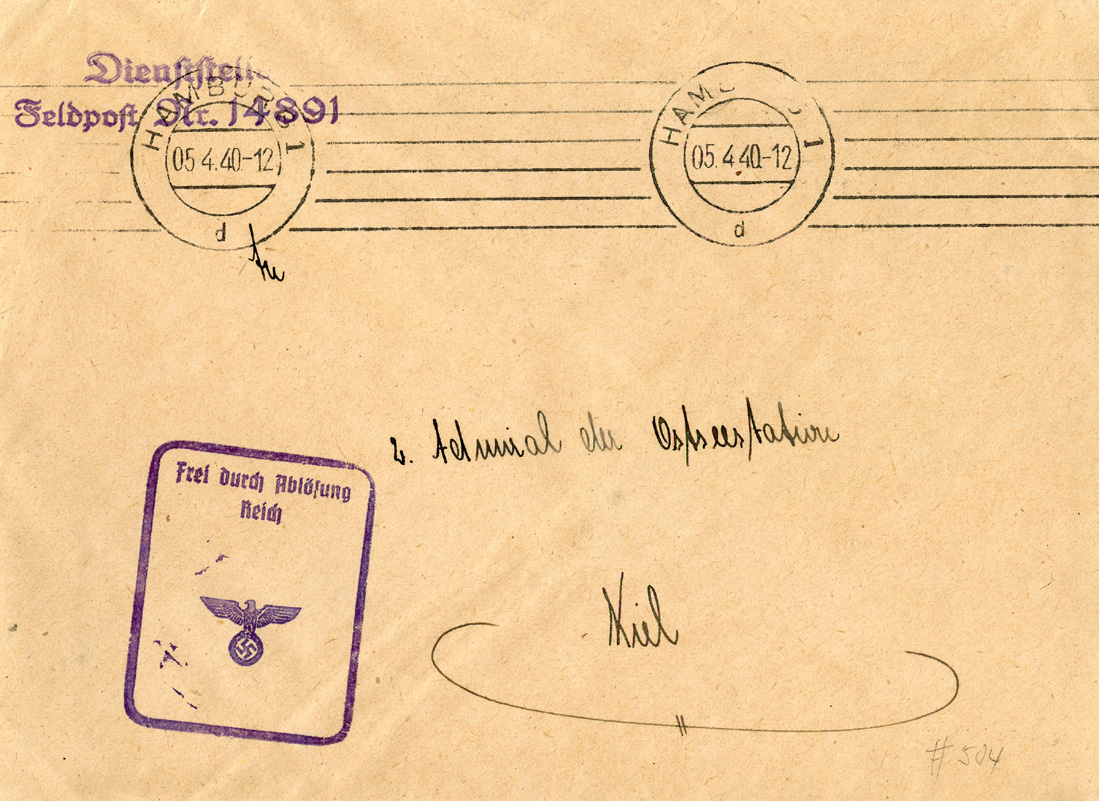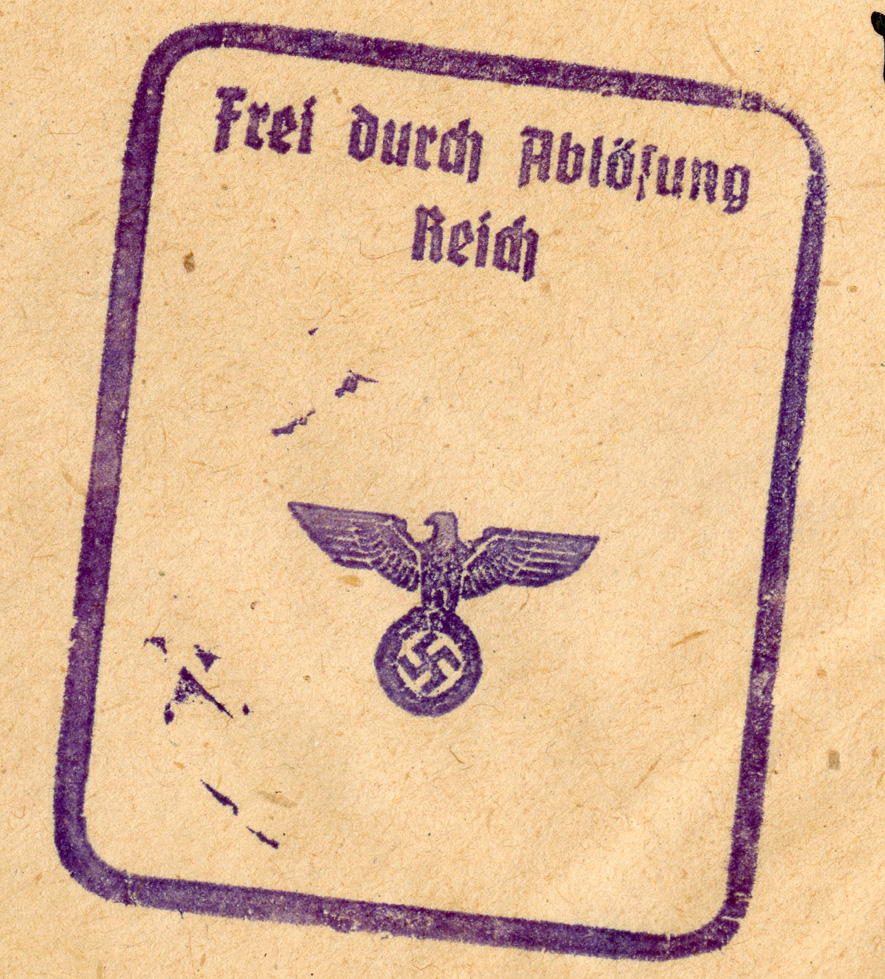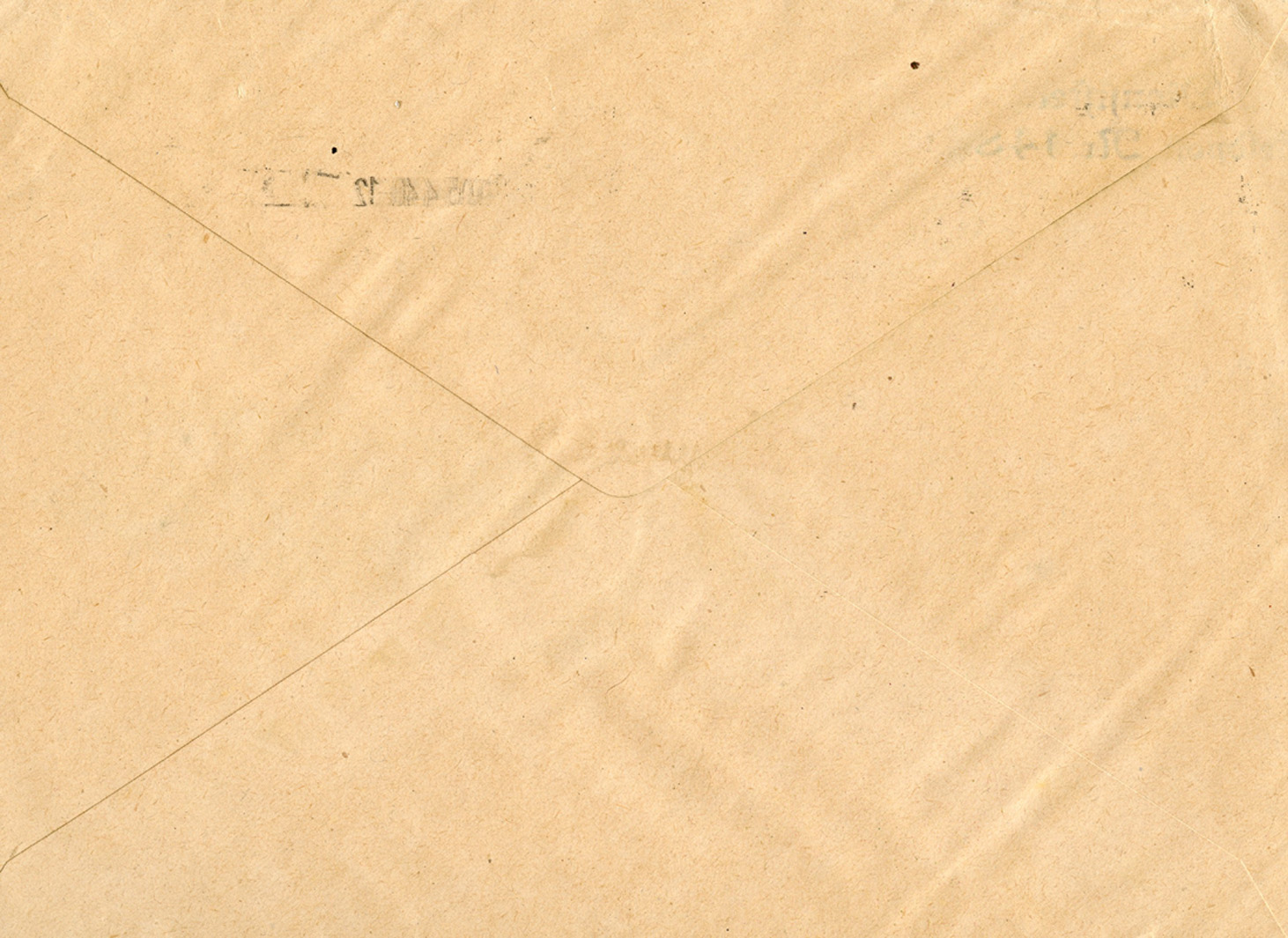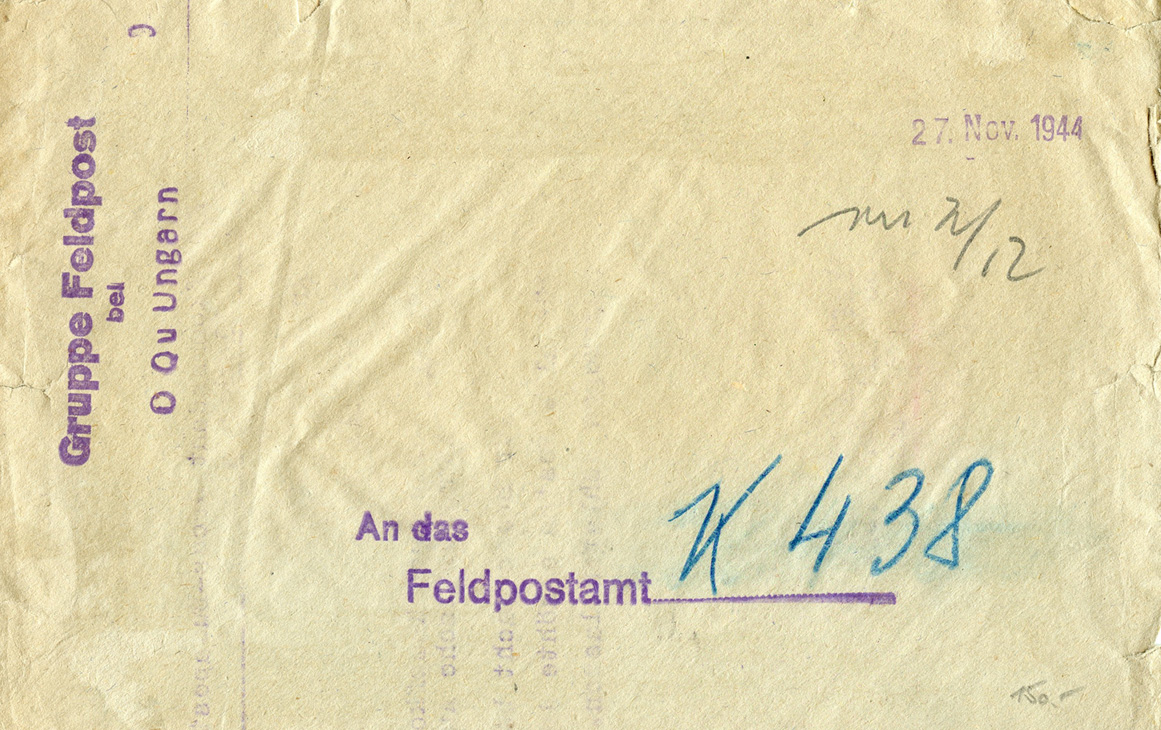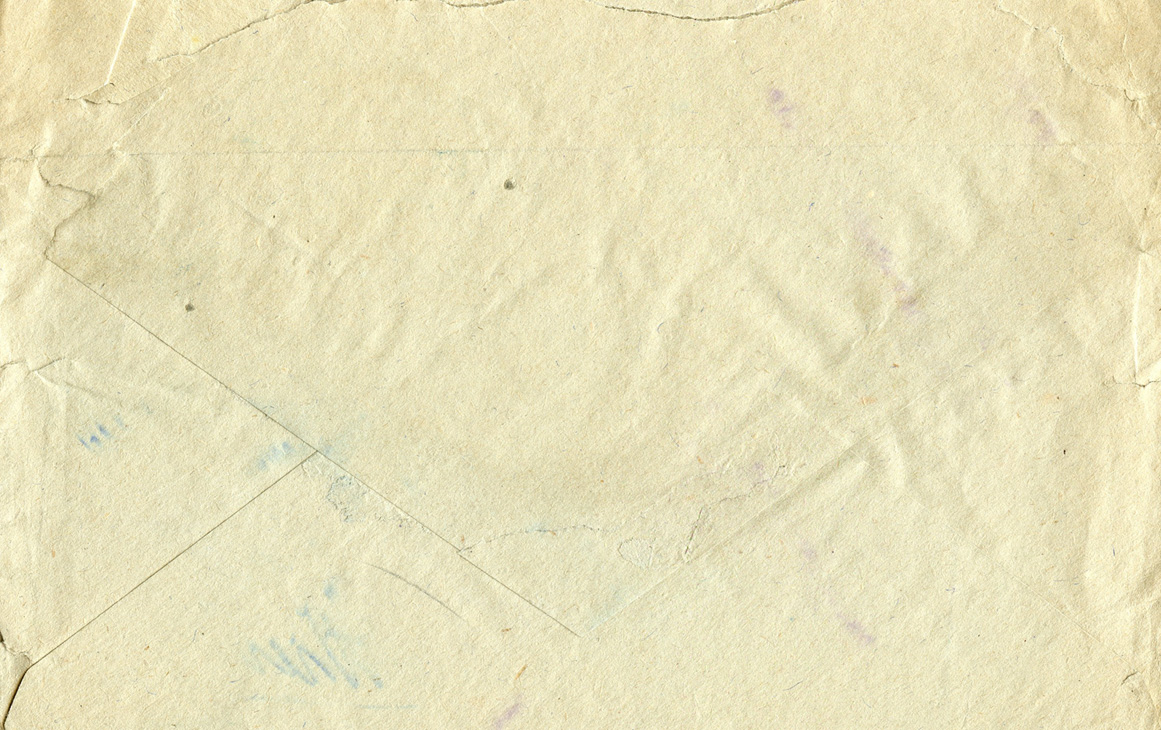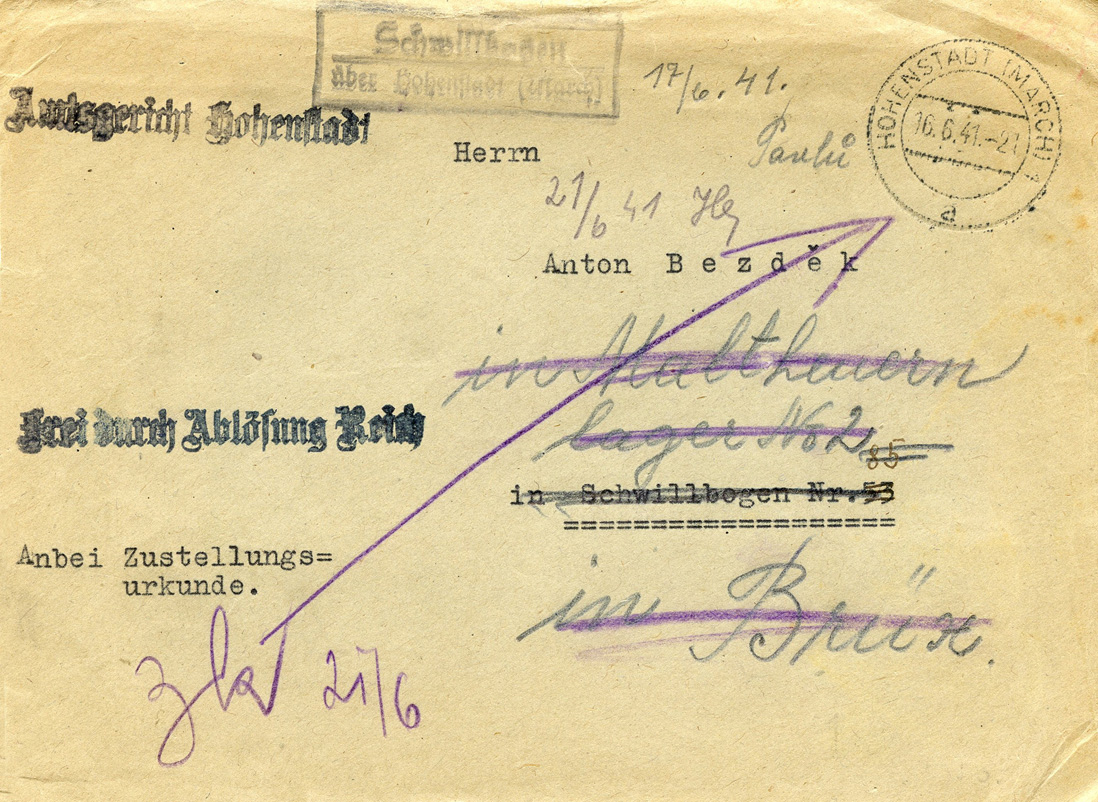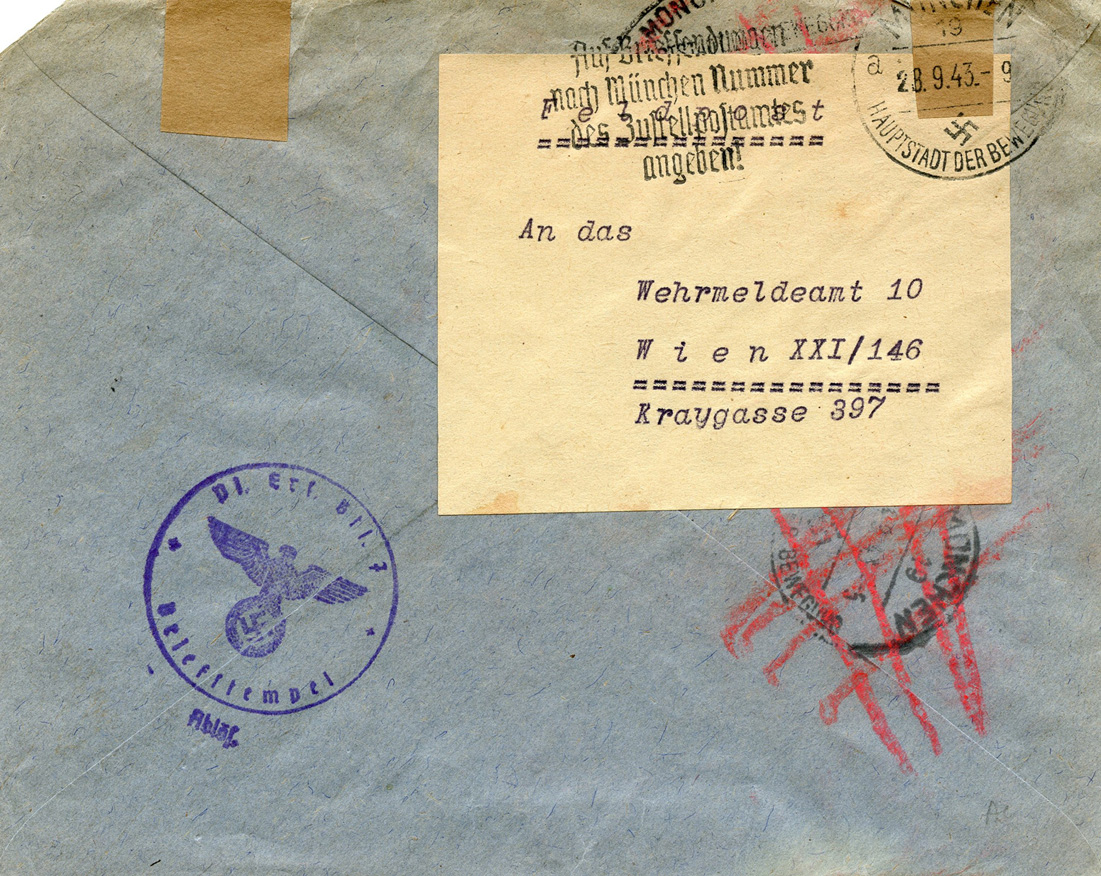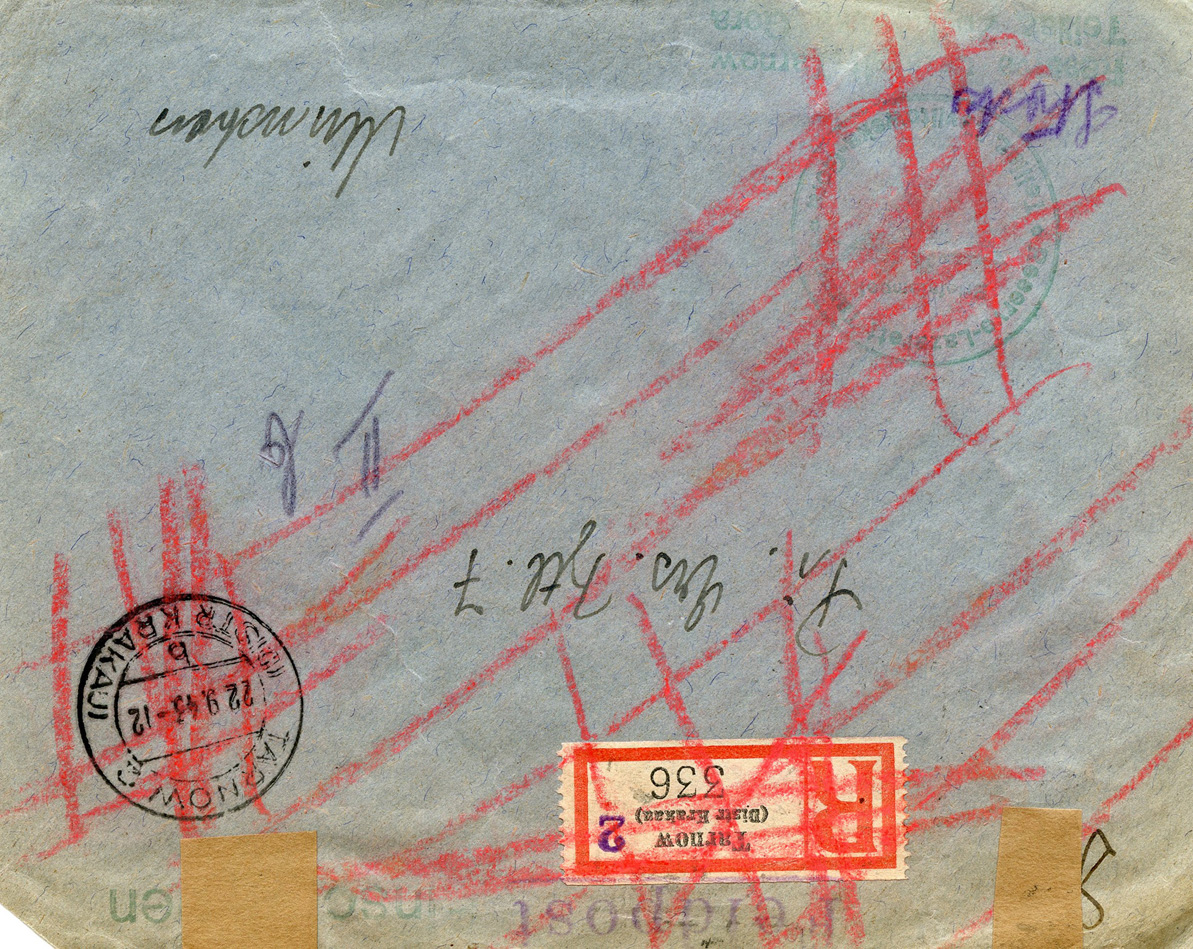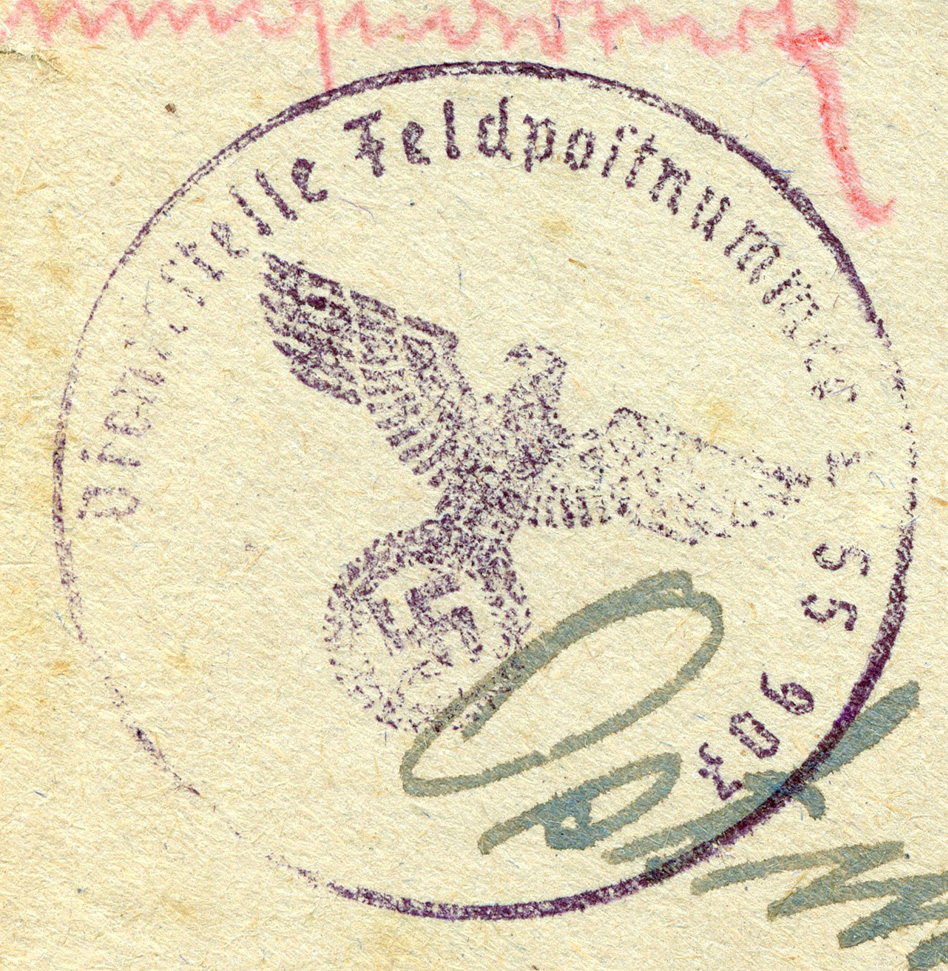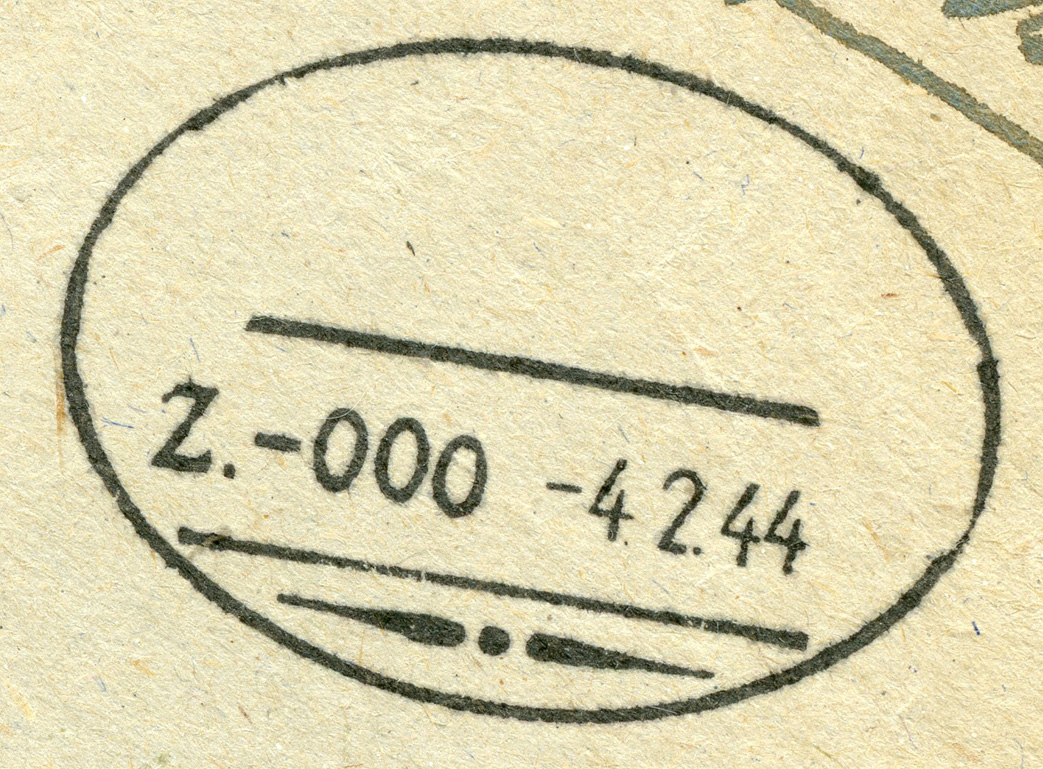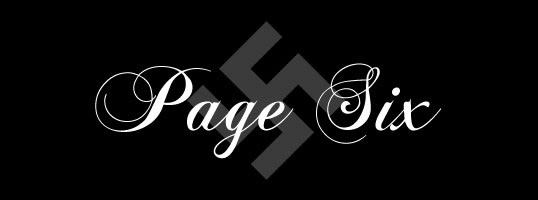
[Below: This is one return letter you wouldn't want to get... imagine writing your friend, who is a soldier, and you get this back, stamped on the envelope you sent:
'Zurück gefallen für Gross-Deutschland'
(Return - Fallen for Greater Germany). Now the family would already have been informed, by either the senior officer, the Party or a veterans' organization. You don't encounter these very often, so they must be somewhat rare for whatever reason. There are a lot of strange stamps and markings on this envelope and I'm not sure what they all mean. It was originally canceled on September 23, 1940. If you look up the Feldpost number you find some unit information: Mobilization - April 28, 1940 - September 9, 1940 and that it is for the 2. Batterie Entgiftungs-Abteilung 104. Germany invaded France on May 9, 1940 and ended on June 22. This letter was postmarked September 23, 1940, but the soldier could have been dead for a while by the time this reached his unit.]
[Below: Close-up.]
[Below: Reverse of envelope.]
[Below: Letter within... so sad that he would never read this. Front/back]

[Below: Here is another 'Return - Fallen for Greater Germany' envelope. This is sent to a Leutnant Klaus Dold from the Bürgermeister of Villingen (a city in the Schwarzwald-Baar district in southern Baden-Württemberg, Germany). The 'L' before his Feldpost number signifies this is Luftwaffe. Specifically it was for the 'III. Gruppe Kampf-Geschwader 51'. This squadron was very active, participating in the West campaign, the Battle of Britain, the Balkan campaign and the German-Soviet war. From 1943 it was used in the Mediterranean, then in Reich defense and on the Western Front. It was canceled on January 21, 1943.]
[Below: Close-up of mayor's seal]
[Below: Close-up of 'Zurück gefallen für Gross-Deutschland'.]
[Below: Reverse of envelope.]

[Below: Here is another 'Return - Fallen for Greater Germany' envelope. This was sent by a family member sharing the same last name, but most likely they already knew the soldier was dead by the time they got this back. This was postmarked on November 28, (1942). The Feldpost number shows it belonged to the '1. Kompanie Kradschützen-Bataillon 55', which during the Invasion of Russia it was subordinate to the 5. Panzer Division.]
[Below: Close-up of 'Zurück gefallen für Gross-Deutschland'.]
[Below: Reverse of envelope.]

[Below: Here is a very historical Feldpost. It was sent late in the war, January 6, 1945 from the Grenadier-Regiment 426, who were trapped in the Kurland Pocket (western Latvia). It was one of the last German groups to surrender in Europe. Approximately 135,000 men surrendered after being ordered to do so. The men themselves were unbeaten, surrounded, behind enemy lines. The might of the Soviet armies could not break them.]
[Below: Reverse of envelope. How very, very fitting. This crude vignette says 'Wir kapitulieren nicht' (We'll Never Give up!).]
[Below: Vignette close-up.]

[Below: Here's a neat-looking Luftwaffe Feldpost, sent from the 2. Batterie Reserve-Flak-Abteilung 323, on November 30, 1940, from France. I love the silver eagle stuck on here. I've also seen a gold version of the eagle.]
[Below: Eagle close-up.]
[Below: Luftwaffe unit ink stamp.]
[Below: Reverse of envelope.]
[Below: Letter within, written on the front/back of hard postcard-like cards.]

[Below: This is neat. It shows flak crews and an American bomber.]
[Below: Neatest of all, this has a gold version of the eagle above. This was sent Feldpost to Haida which is in the Sudetenland and canceled on February 24, 1940. It lists a Feldpost number of L318251, which belongs to 'Kompanie Luftwaffen-Bau-Bataillon 310/III'. A Bau Battalion was 'initially formed as battalion-HQs, to control various independent Luftwaffen-Bau-Kompanien.']

[Below: Here is an envelope from the Kriegsmarine-light-cruiser-KMS-Königsberg. A sad fate befell her when she was sunk during the battle of Norway (by British planes when she was already disabled). It was a miracle that only eighteen men were killed in the attack. This envelope is a reused example, where in this case, they merely pasted a piece of paper over the old information. You can just read under it (when you hold it up to a light), it says 'Marineintendantur; Stationstaffe Kiel'.]
[Below: Cruiser Königsberg ink stamp close-up.]
[Below: Cruiser Königsberg ink stamp close-up.]
[Below: Reverse of envelope.]
[Below: Postcard of the Königsberg.]
[Below: Text on back of postcard.]
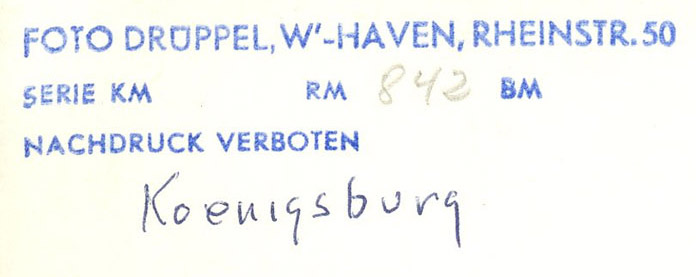
[Below: The Königsberg while visiting Gdynia, Poland, 1935.]
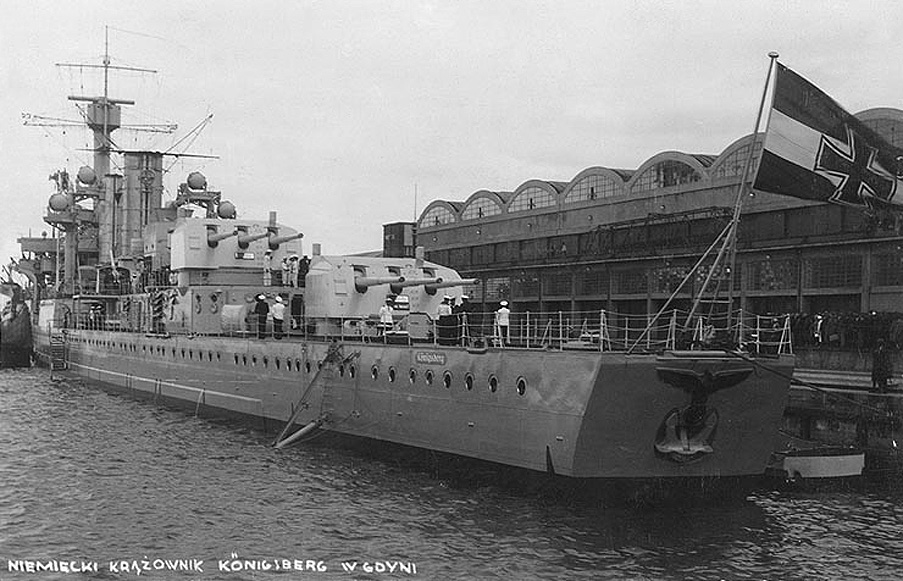
[Below: The Königsberg while visiting Gdynia, Poland, 1935.]
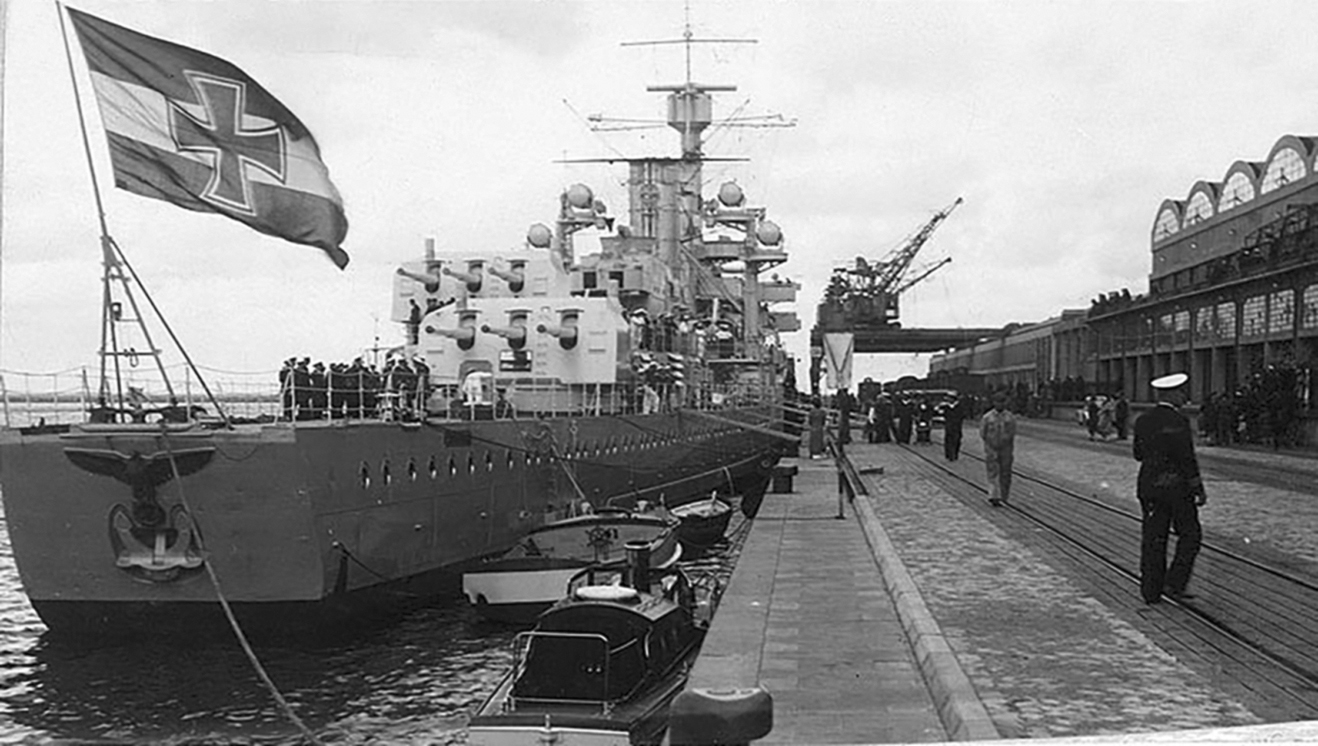
[Below: The Königsberg.]
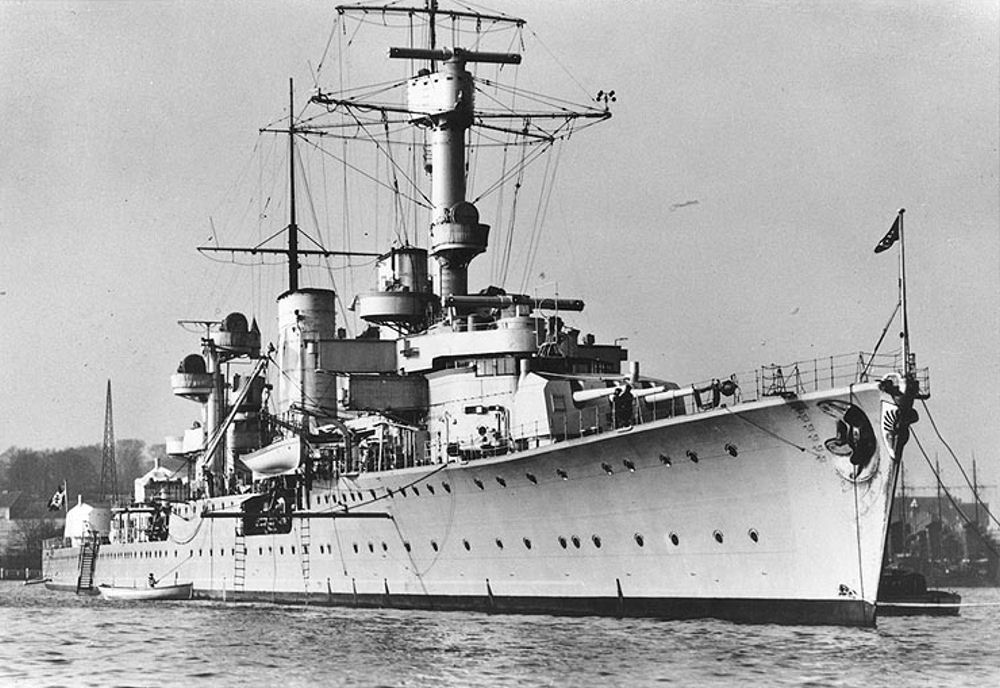

[Below: Here is an envelope from the auxiliary cruiser 'Widder', used by Germany's Kriegsmarine as a merchant raider in WWII. Her Kriegsmarine designation was Schiff 21. The name 'Widder' (Ram) represents the constellation Aries in German. During a five and half month period the Widder captured and sank ten ships. During the sinking of one British ship it was said that the Widder machine gunned the lifeboats. But like all war crime accusations against the Third Reich, one must be extremely skeptical of this, especially since this was based off the testimony of the sole survivor. But like in most Allied kangaroo courts the captain of the Widder was charged and convicted after the war and died in an Allied dungeon. After the war the Widder was stolen from Germany by Britain for 'war reparations'! Ha! Even better, in 1950 Britain sold it back to Germany! Ridiculous. Anyway, this was canceled on December 19, 1939. You'll also notice in the left hand corner the Feldpost number, with the letter 'M' wrote in. This signifies Kriegsmarine. 'L' was used for Luftwaffe and nothing but the number for Wehrmacht.]
[Below: Widder ink stamp close-up.]
[Below: Envelope reverse.]
[Below: The Widder.]
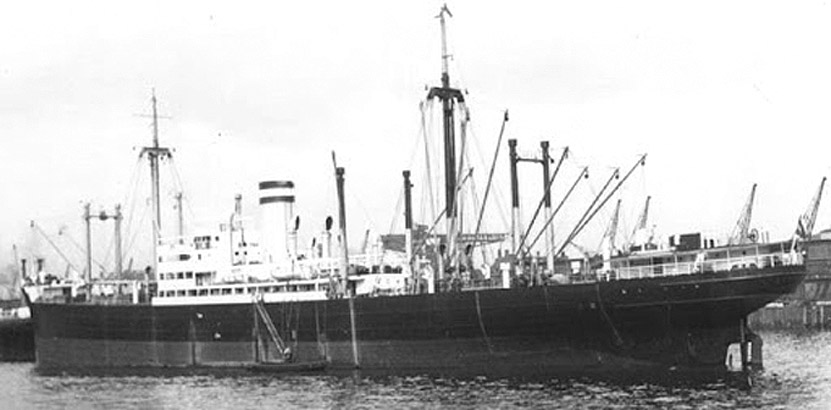
[Below: Knight's Cross winner Hellmuth von Ruckteschell, the captain of the Widder. One of only two Kriegsmarine captains to be charged with war crimes.]


[Below: This is addressed to Korvette Kaptain Crüsemann, who I couldn't find any mention of on the internet. In the German Kriegsmarine the rank 'Korvettenkapitän' was a naval rank equivalent to a Major in the army. This was canceled on March 14, 1940.]
[Below: Close-up. The detail on these stamps is superb.]

[Below: This Feldpost belonged to the 12. Kompanie Kraftwagen-Transport-Regiment 616 and was sent August 11, 1944. But it's not the front of this that makes it interesting to us, but the back.]
[Below: Ink stamp close-up.]
[Below: Here's something I don't think I've ever seen before, a censored Feldpost. For whatever reason these must be fairly rare, yet you would think there would be many of them. Hmm... The Feldpost number comes back as 'Feldpost prufstelle AOK 18, which must be a Feldpost censor. 'Dienststelle' means 'office' and 'Eingang' and 'Ausgang' mean 'entrance' and 'exit', which must mean how long the censor held this envelope. The censor tape says 'Feldpost prüfstelle', which means 'Feldpost inspection station'.]

[Below: Fairly uncommon, here is a Feldpost with a cancel from a train. 'Zug' means 'Train' and 593 is the trains number. This was canceled on June 21, 1943. You can always tell the train cancels by their unique oval design. The reverse of this envelope is blank.]

[Below: Here is a very special Feldpost. It dates back to the final days of the war, in a cauldron of fire and darkness -- Brückenkopf Schwedt. It was a terrible, hellish period for German soldier and civilian alike. But it was also a time when the German spirit shined like a million diamonds. The defense of the Oder bridgehead at Schwedt was entrusted to the extraordinary SS-Obersturmbannführer Otto Skorzeny. In his book Otto Skorzeny - My Commando Operations, Skorzeny's experiences in these final days is revealed. To read this book is to learn just how special these men were in the face of almost certain death. What is fascinating about this particular Feldpost is it contains two letters from the front! Unfortunately they are written in Sütterlin, a type of German script which is nearly unreadable through modern eyes.]
[Below: A researchers paper inside the envelope.]

[Below: Letter #1 - front/reverse.]
[Below: Letter #2 - front/reverse.]
[Below: Otto Skorzeny - My Commando Operations.]
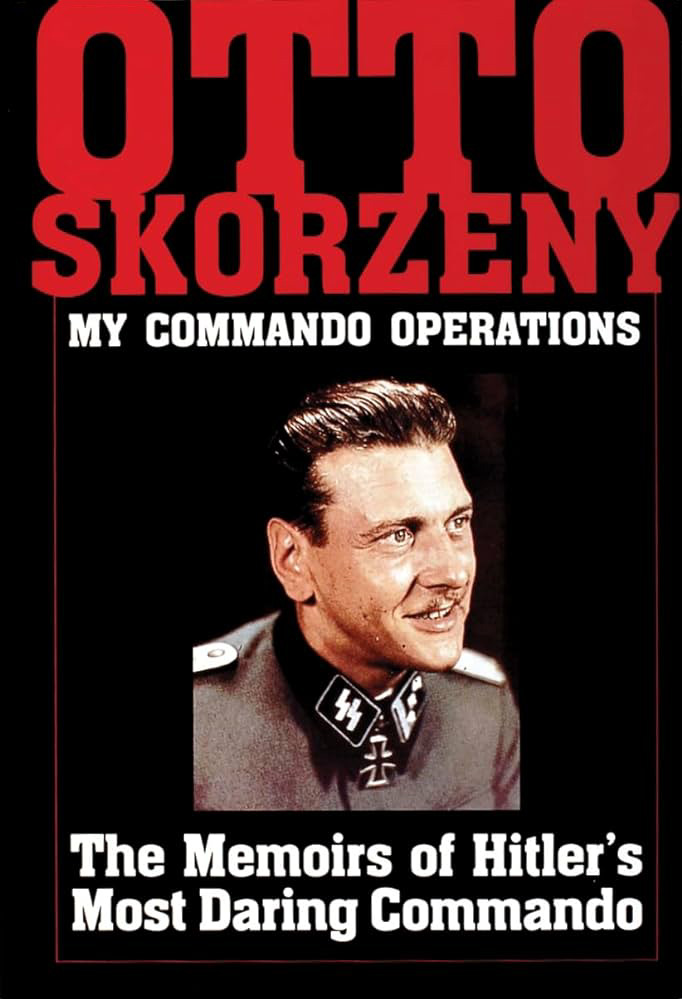

[Below: Here is a Feldpost from the German destroyer 'Erich Steinbrinck', named after a WWI German naval officer. It was postmarked in Hamburg on April 5, 1940. After being involved in several missions and repairs, it was eventually badly damaged by Allied bombs, putting the ship out of the war. After the war the 'Erich Steinbrinck' was given (stolen) by the Soviet Union as 'war reparations'. It was eventually sold for scrap in 1958.]
[Below: The ink stamp is interesting.]
[Below: Envelope reverse.]
[Below: The 'Erich Steinbrinck'.]
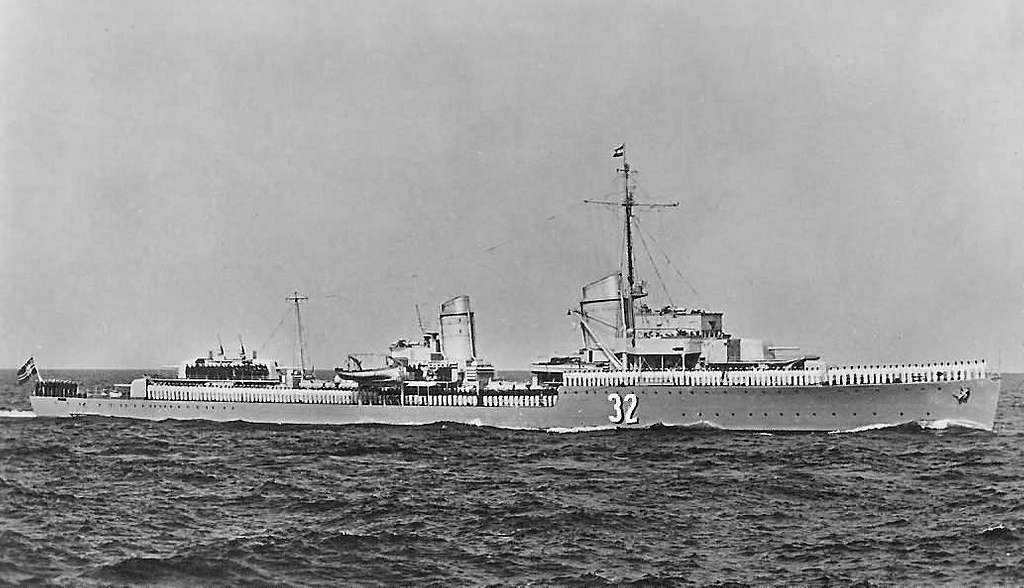

[Below: Here is a Feldpost from a very dark time in WWII -- The siege of Budapest, one of the bloodiest sieges of World War II. Against the tired and shattered German Army forces, Waffen-SS and Hungarian Army, were more than 1,000,000 communist soldiers. The story of the siege of the city and the hellish battles that took place is like something out of a nightmare. This envelope was postmarked on November 27, 1944, when Soviet troops were surrounding the city. It is made of flimsy reused paper. The horrid battles took place everywhere imaginable, from the sewers to graveyards. 28,000 German and Hungarian troops eventually tried to break out of the city, only 600-700 would make it to the safety of German lines.]
[Below: Close-up of ink stamp.]
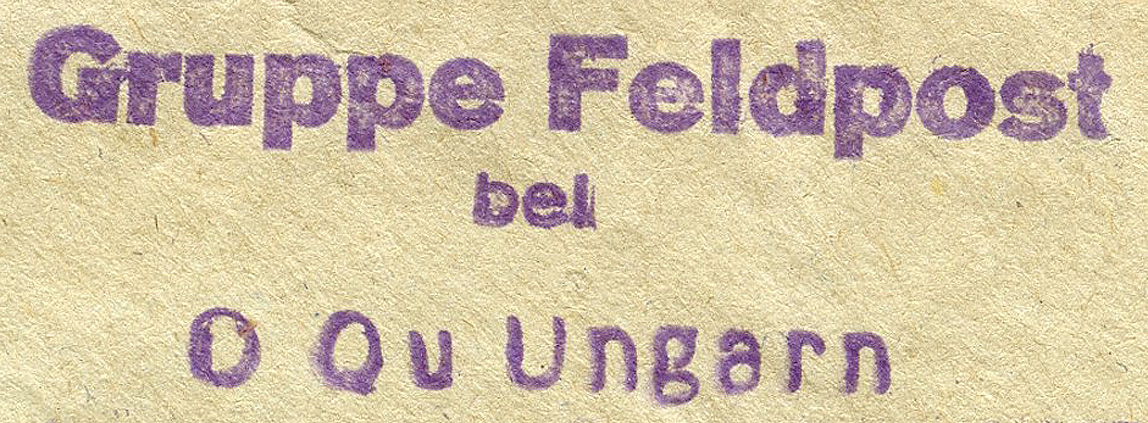
[Below: Reverse of envelope.]
[Below: German and Hungarian soldiers on a King Tiger tank inside the city, October 1944. Only one Tiger II unit was stationed in Budapest.]

[Below: Hungarian troops man a 7.5 cm Pak 40 anti-tank gun in a Budapest suburb, November 1944.]


[Below: Here is an offical envelope from 'Hohenstadt (March)', or 'Hohenau an der March', March is a river and 'Hohenau an der March' is a town in Lower Austria. This was postmarked on June 16, 1941. This has a lot going on, apparently the original address was wrong, and someone then wrote in another address. It was originally sent to 'Schwillbogen' (Svébohov in Czech). This is a tiny municipality and village in the Czech Republic, with about 400 inhabitants. Well, our Anton wasn't there for whatever reason, so a new address was penciled in. This time to a 'lager' (camp) in 'Maltheuern Brüx'. Brüx is called 'Most' in Czechoslovakia today. It is an industrial city and was regularly bombed (mostly by USAAF) because of its synthetic oil refinery and huge coal mines. Brüx was a part of the Sudetenland in WWII, stolen from Germany after WWI, and again after WWII. The stamps say 'Amtsgericht Hohenstadt' (District Court of Hohenstadt) and 'Anbei Zustellungs=urkunde' (Enclosed certificate of service).]
[Below: Reverse of envelope. We can see this was sent from a camp (lager) and postmarked in Maltheuern Brüx five days after it was sent. I wonder if Anton ever got this?]

[Below: This is an official miltiary envelope sent to 'Wehrmeldeamt' (Military Registration Office) and postmarked on September 28, 1943. What is interesting is this envelope has been rather crudely reused. By this time in the war people (and the government) were encouraged to reuse envelopes to save paper. Mostly they would cut them open and invert the envelopes, making the inside the outside, thus having a new blank envelope. They would also do what is seen here, gluing a sheet of paper over the old address. Here they used the back of an envelope as the new front and crossed out the remainder of the old address. But wait until you see the other side...]
[Below: Close-up of military stamp.]
[Below: Reverse of envelope. We see this was originally a Feldpost sent from Krakau, Poland to Munich, Germany. It was sent to 'Pi. Ers. Btl. 7' (Pionier Ersatz Bataillon 7). In the left hand corner is a green stamp which says (among other things) 'Lazarett', which means hospital. This Feldpost was also registered (note the small label on the top center of the envelope and the 'Einschreiben' half covered up on the upper right. This original envelope was more interesting than the one that replaced it!]

[Below: Wow, this has a lot going on. First this is a Feldpost, and we see the Feldpost number on the stamp is '55907', which is from the '5. Batterie Flakscheinwerfer-Abteilung 708'. There is an interesting train cancel in the upper right corner, but it lacks any information, this is sometimes referred to as a 'dumb cancel', the military would use these blank cancels to better hide their locations. But I've never seen a train one like this. Let's look at the original typed address:
'Ruppersbach' is in Baden-Württemberg.
'Winzerei "Polanetz" bei St. Margarathen Landkreis Marburg'
Which means:
Winery "Polanetz" near St. Margarathen District of Marburg (Germany)
But something went wrong and a new address was written, this one was in Marburg.]
[Below: Close-up.]
[Below: Close-up of 'dumb' train cancel.]
[Below: Envelope reverse. This was sent from a Franz List to a Maria List. We also see the Feldpost number has an 'L' in front of it, this means 'Luftwaffe'. He was writing from Nuremberg.]
